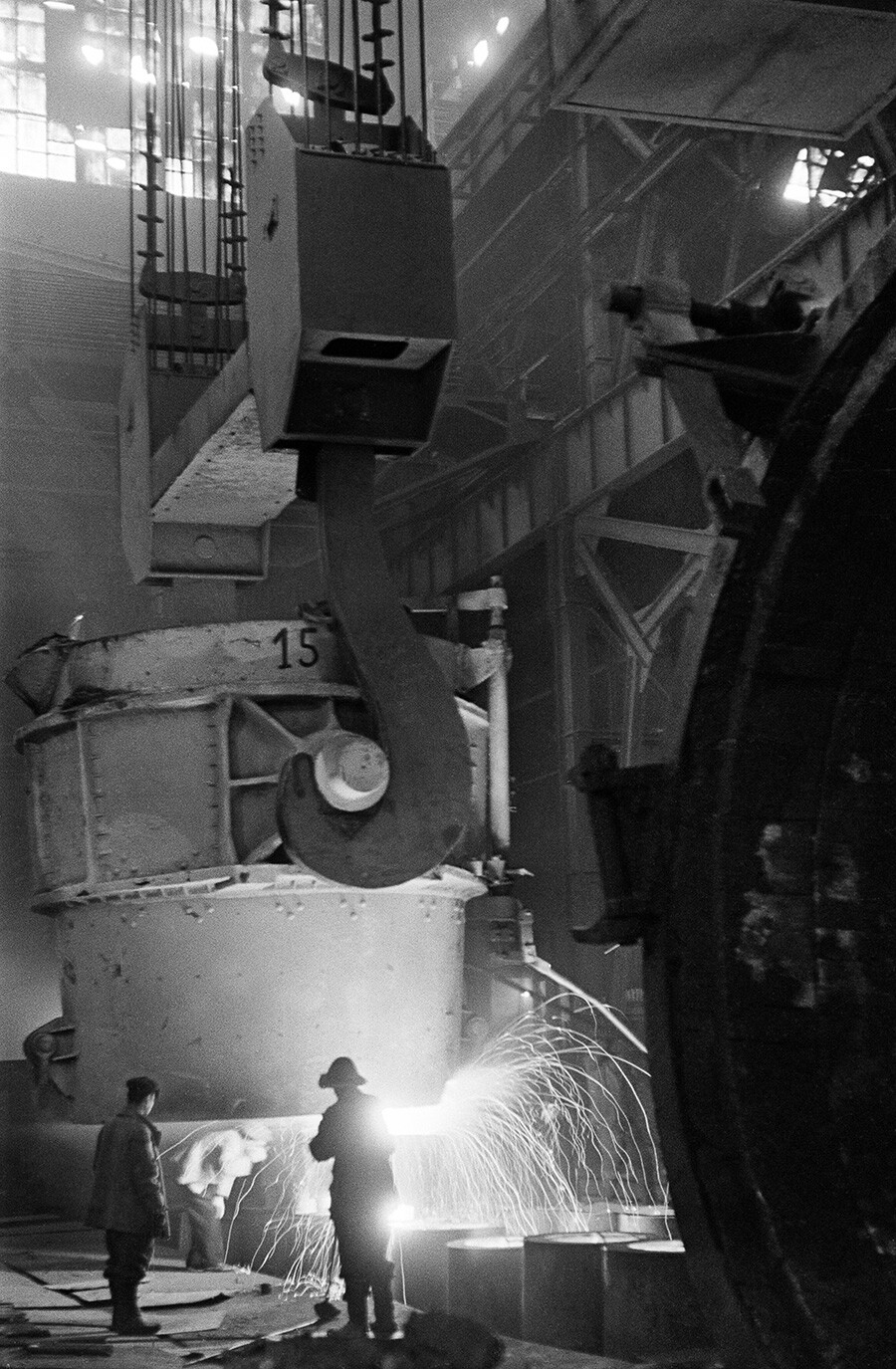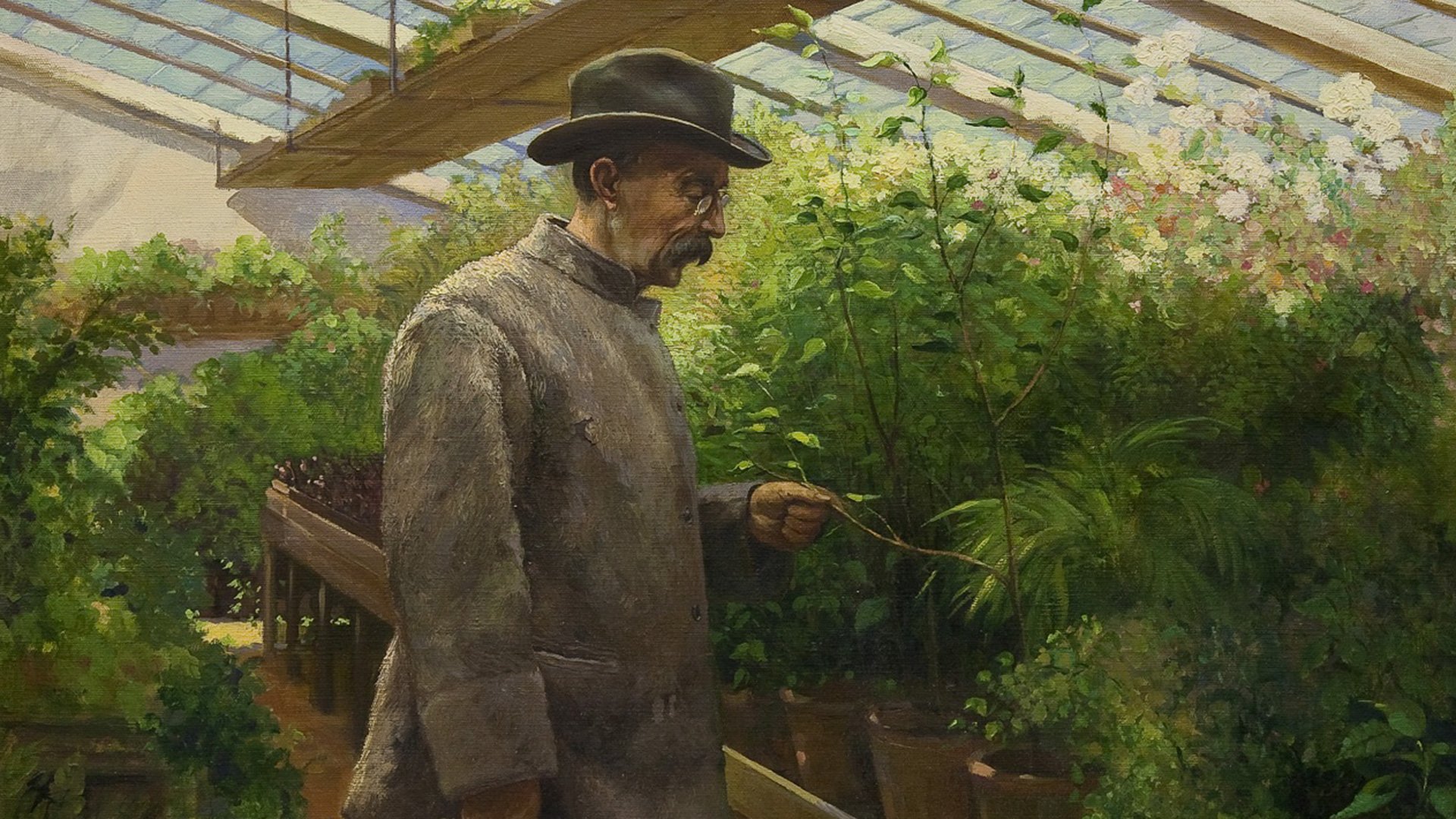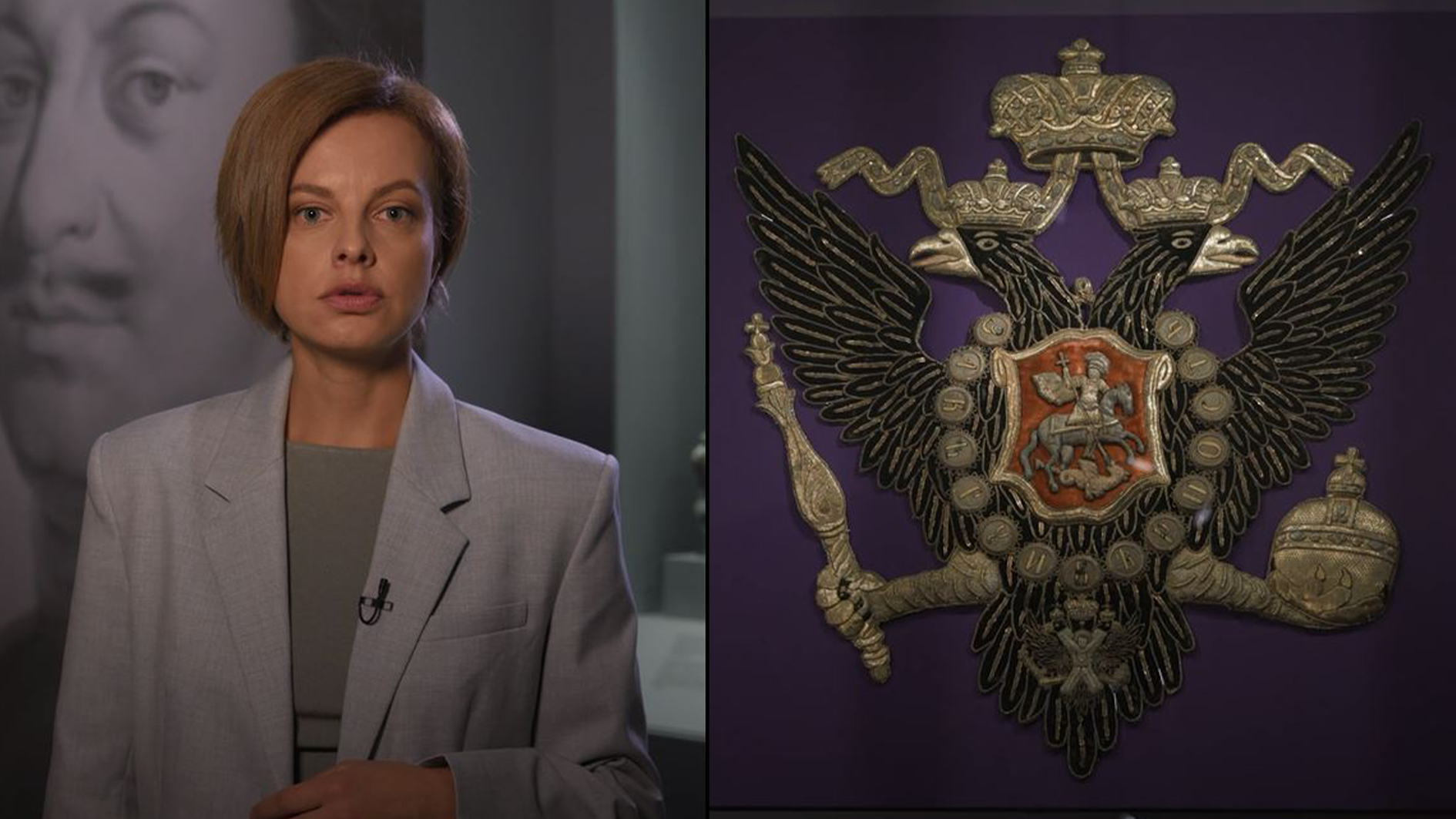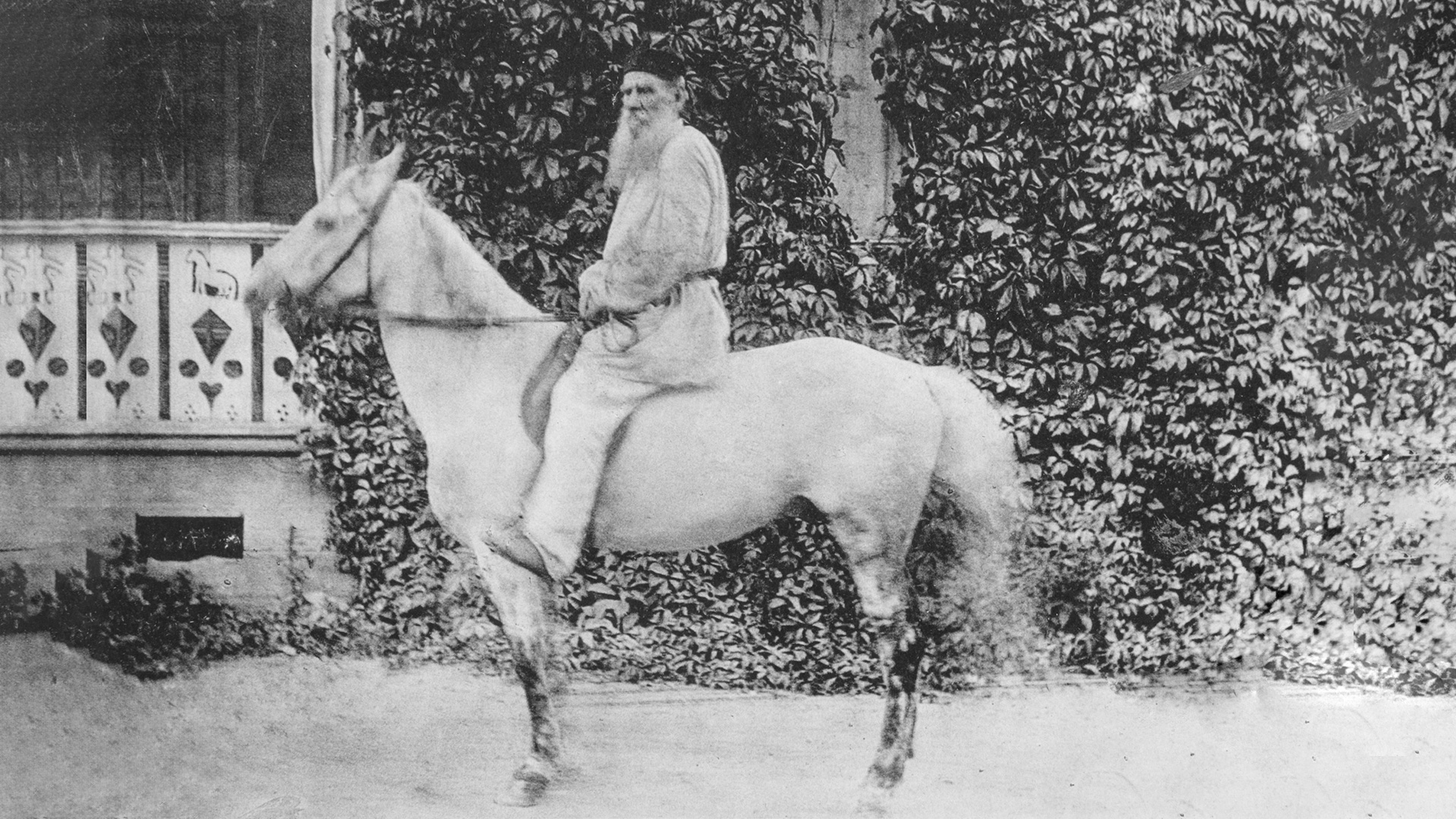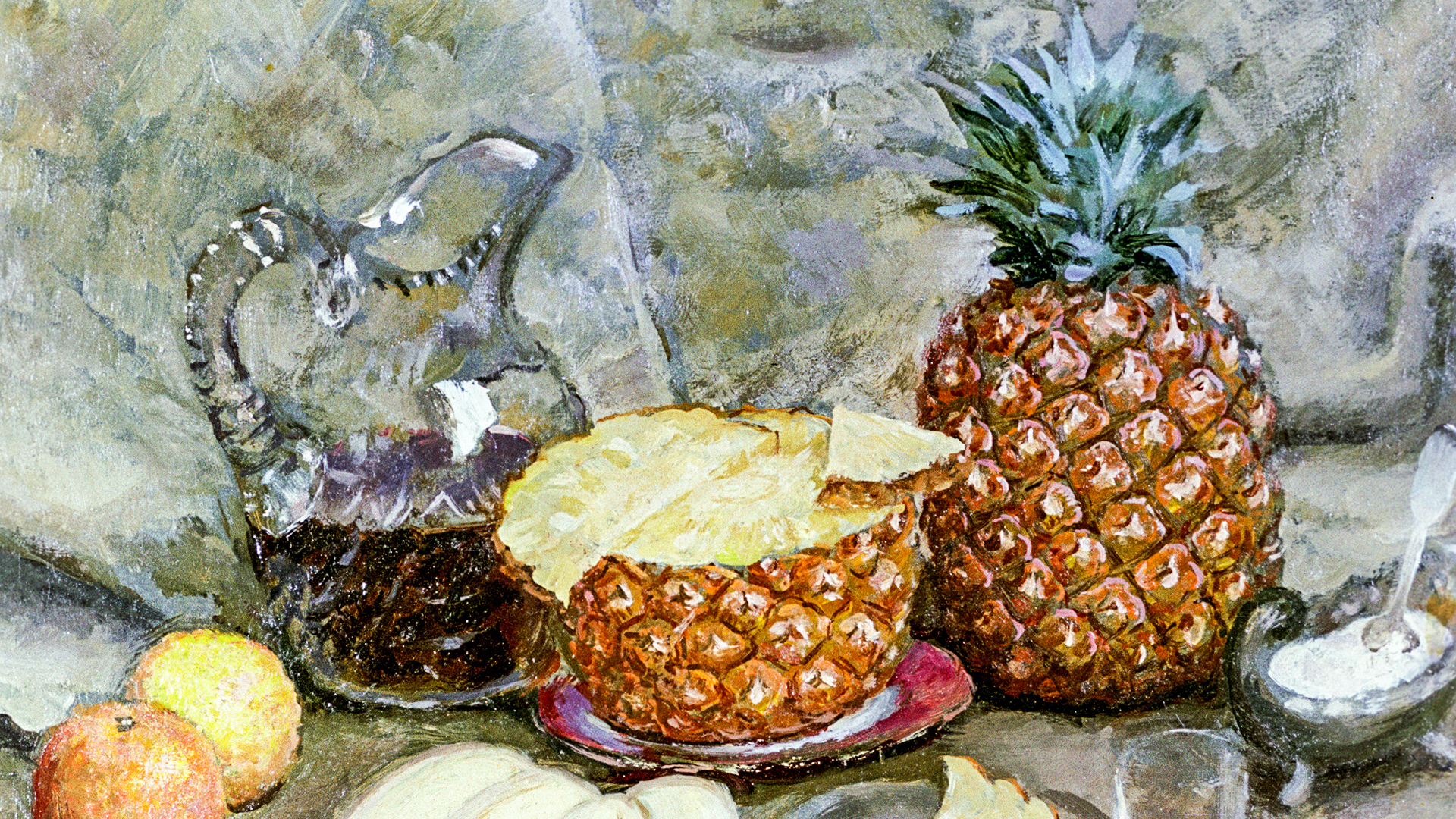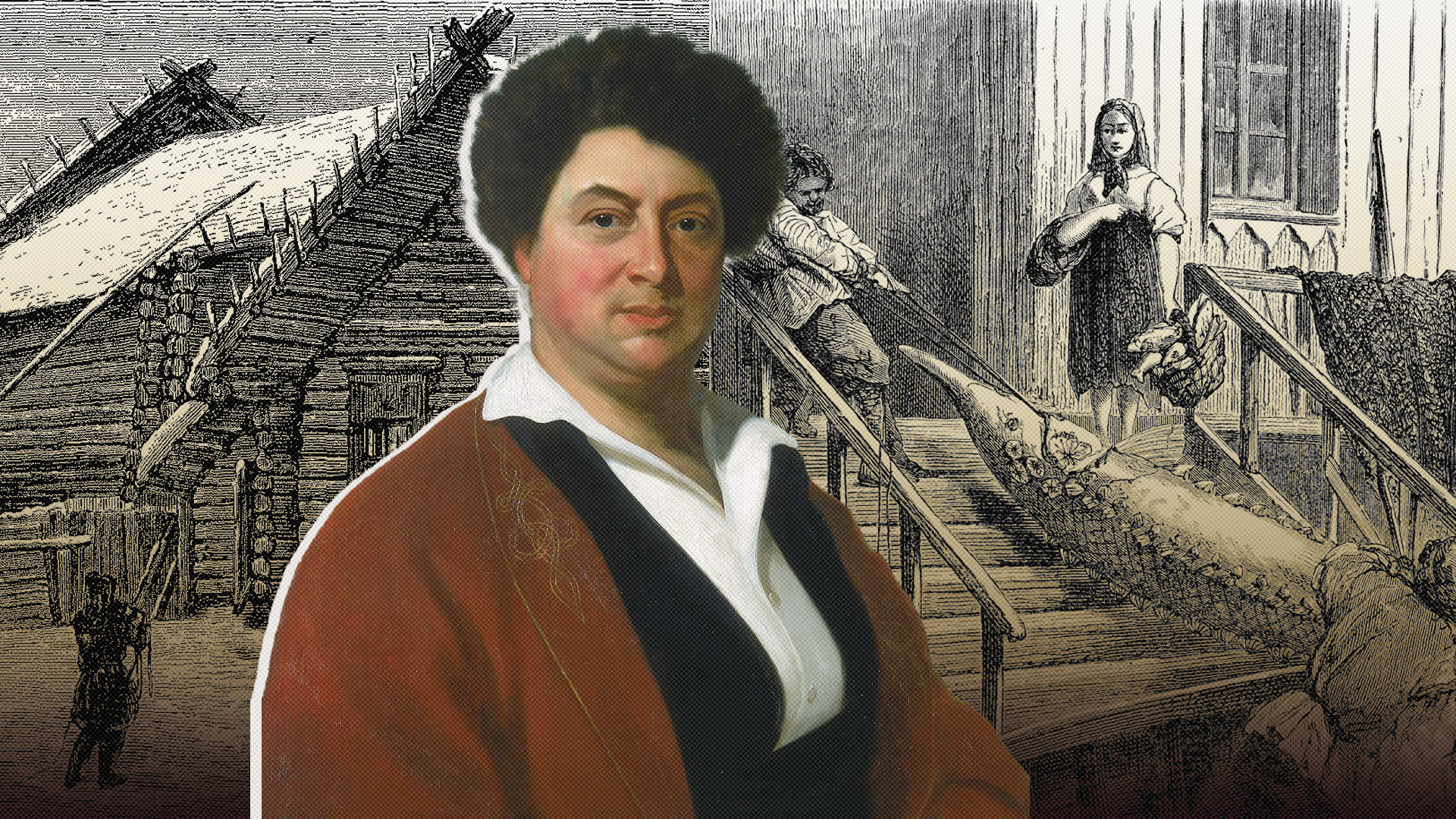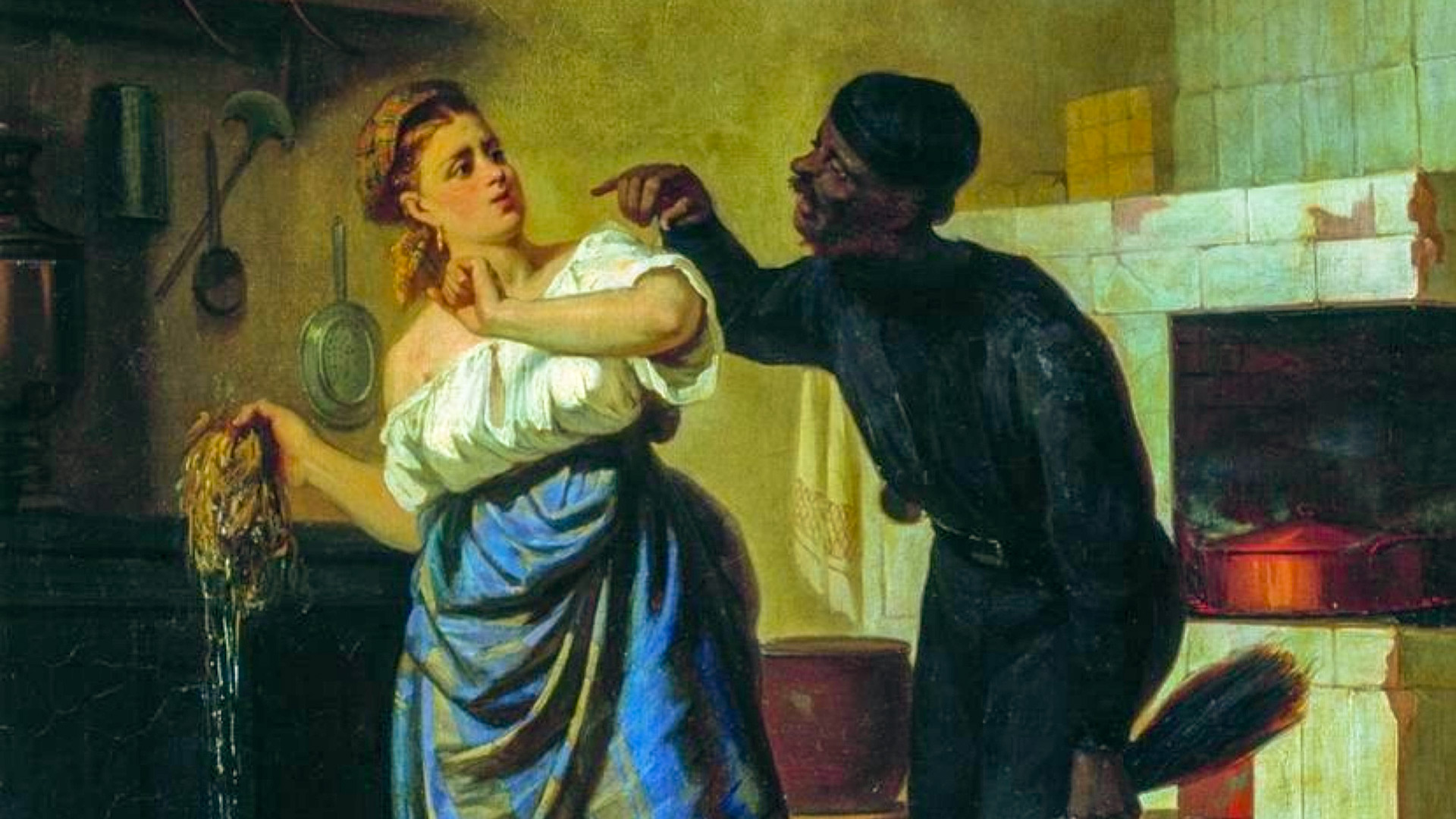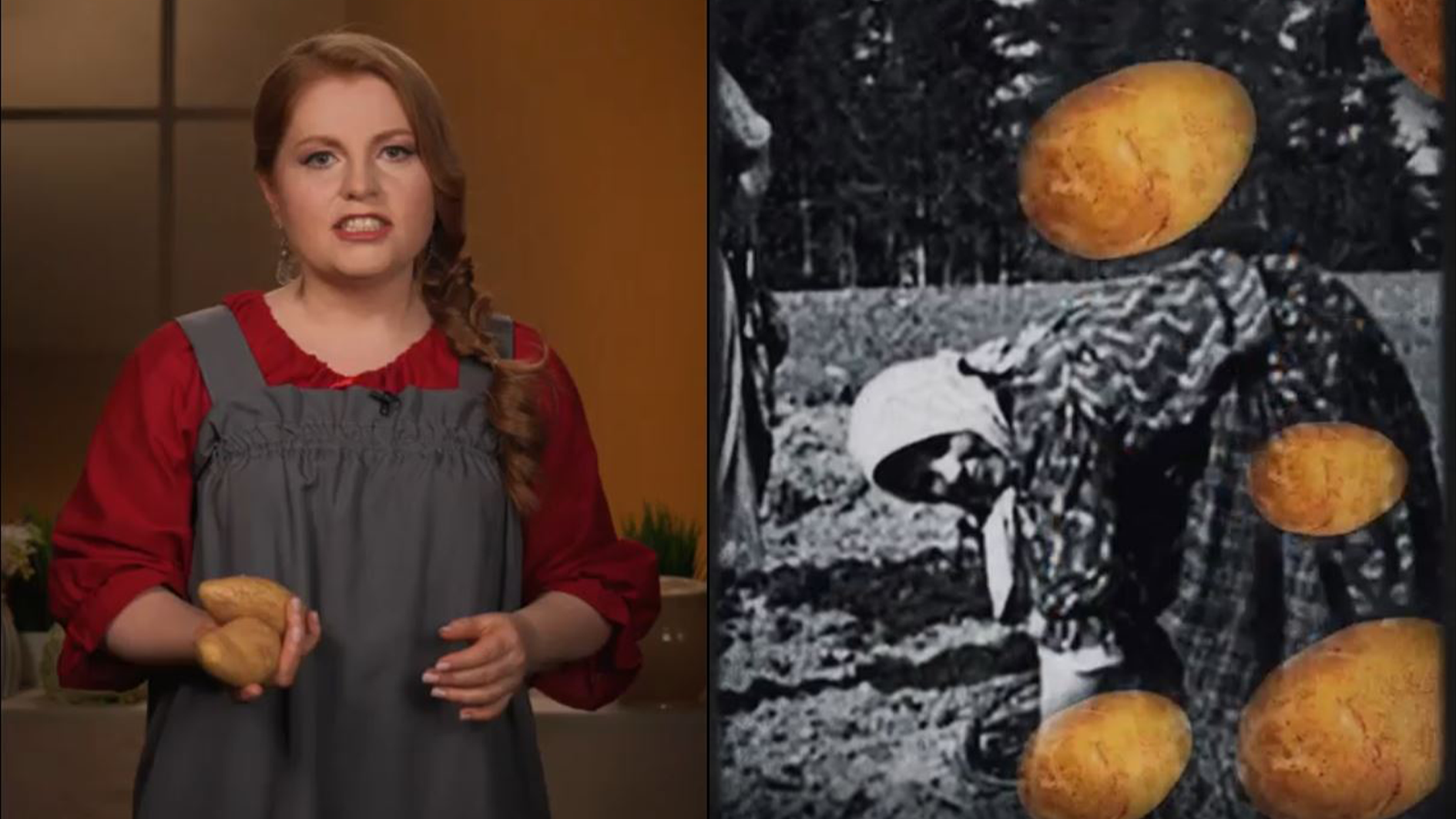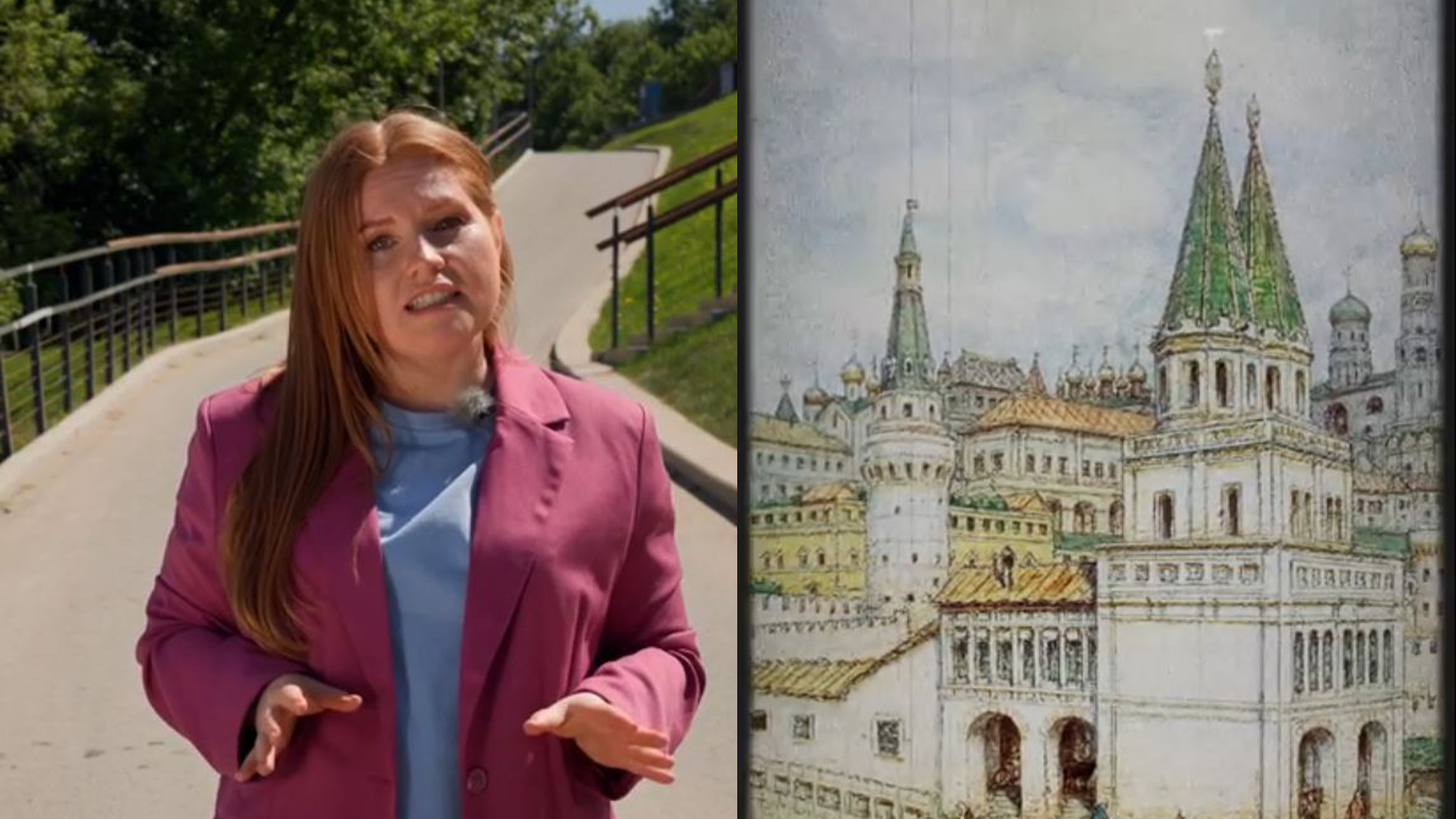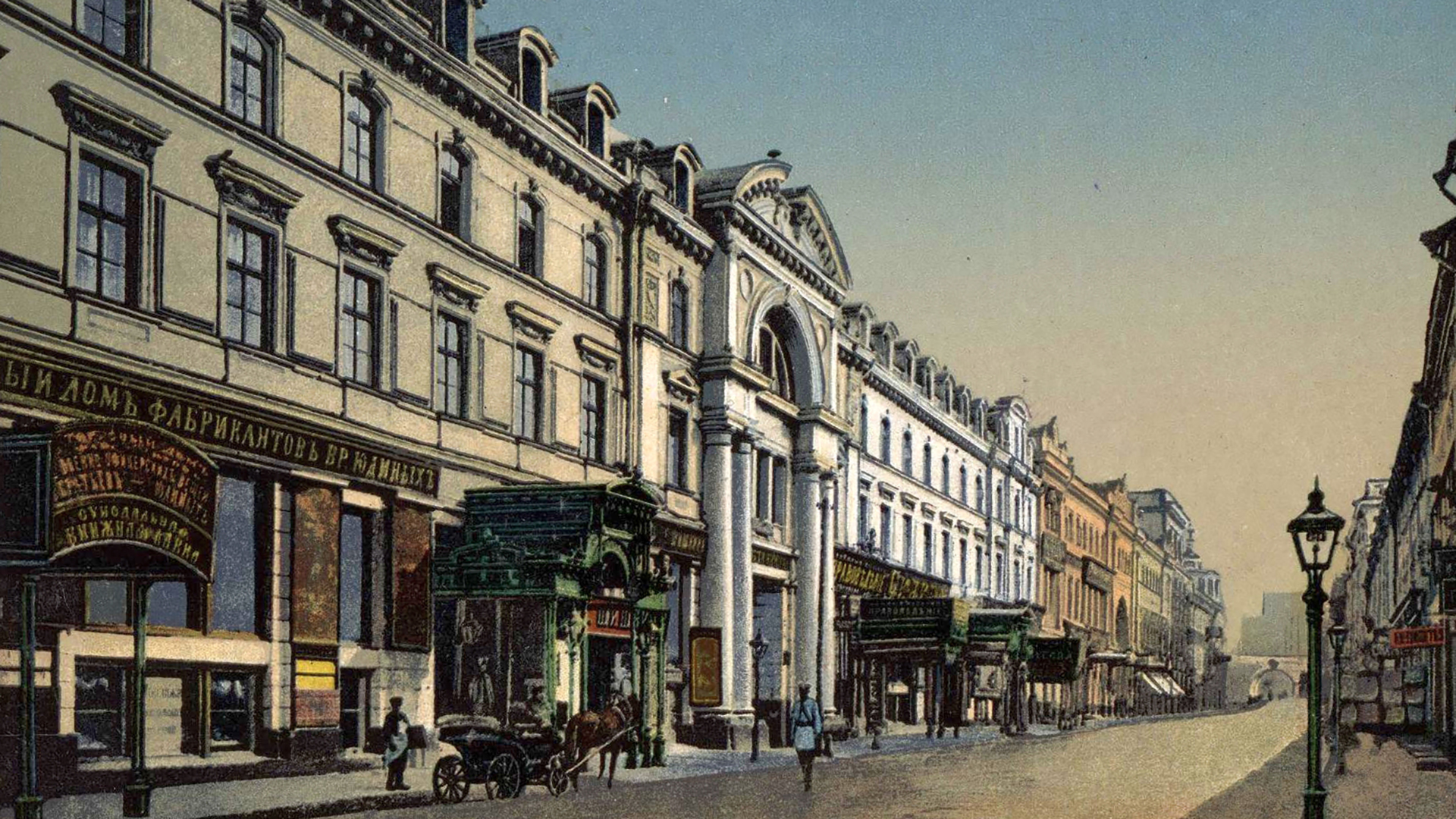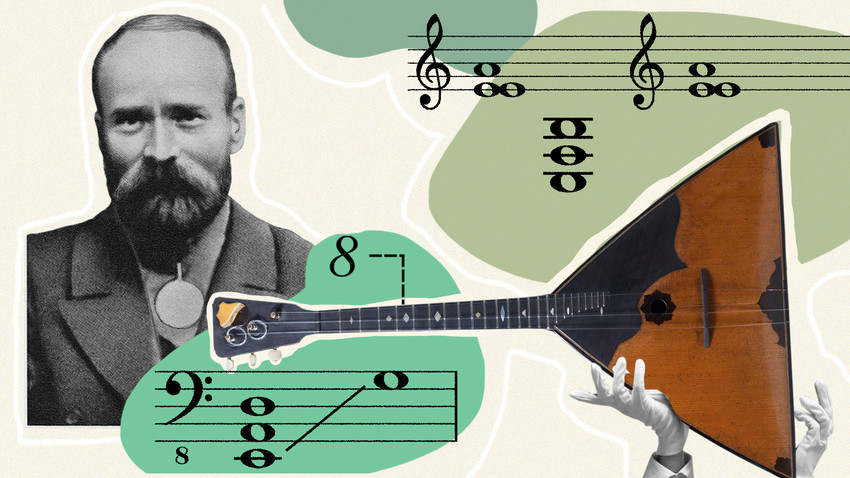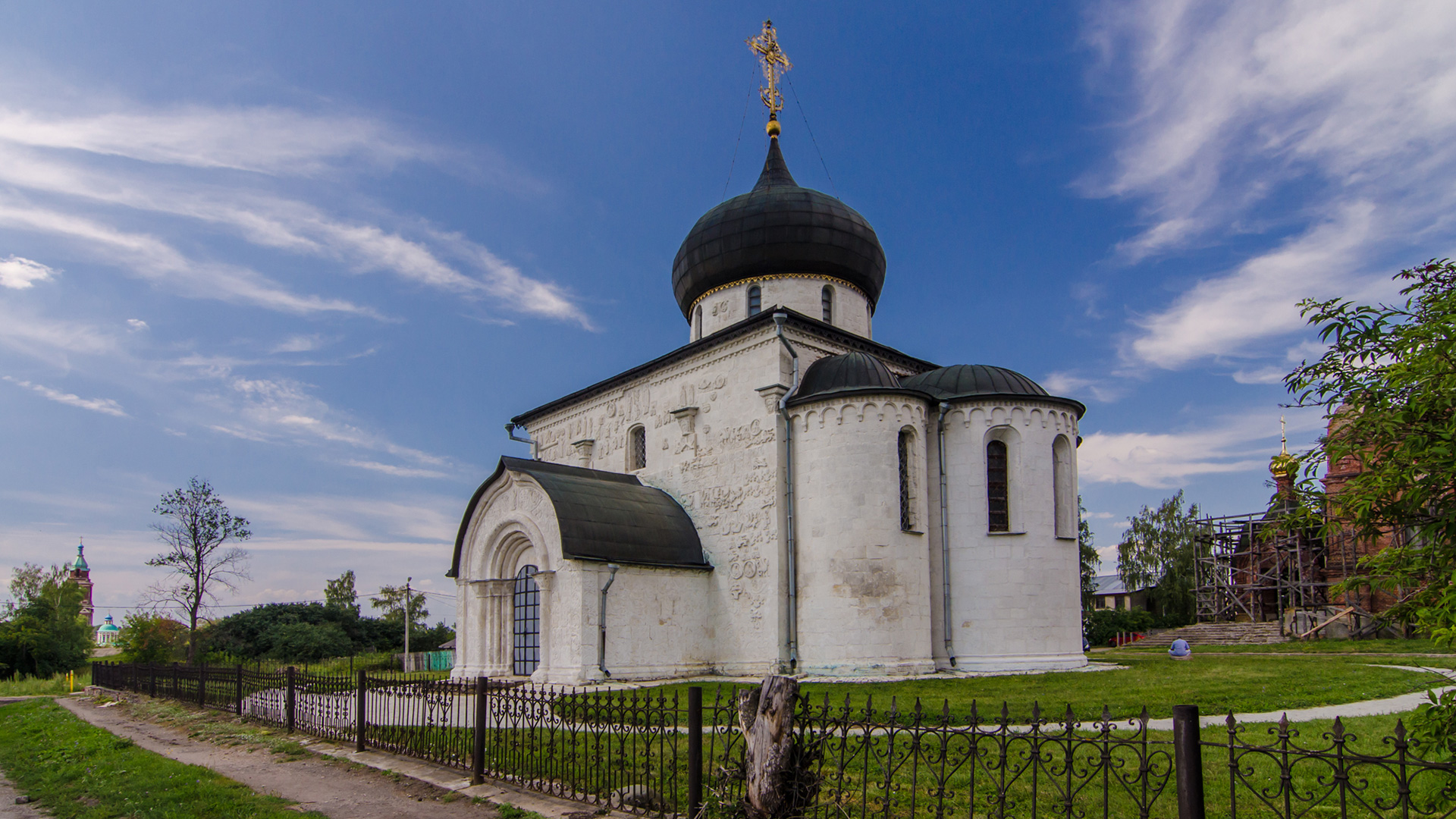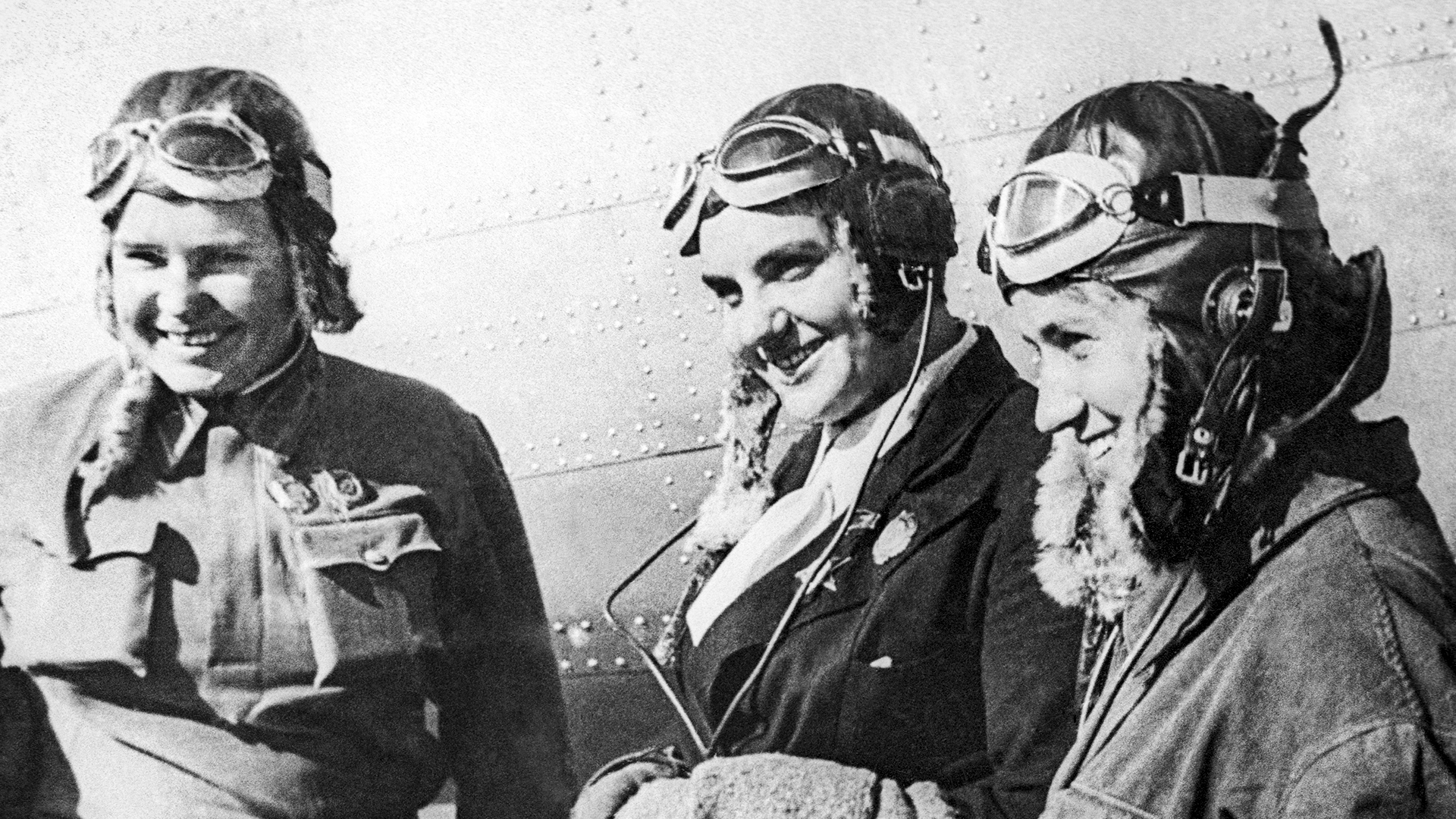
What Russia was like in 1944 (PHOTOS)
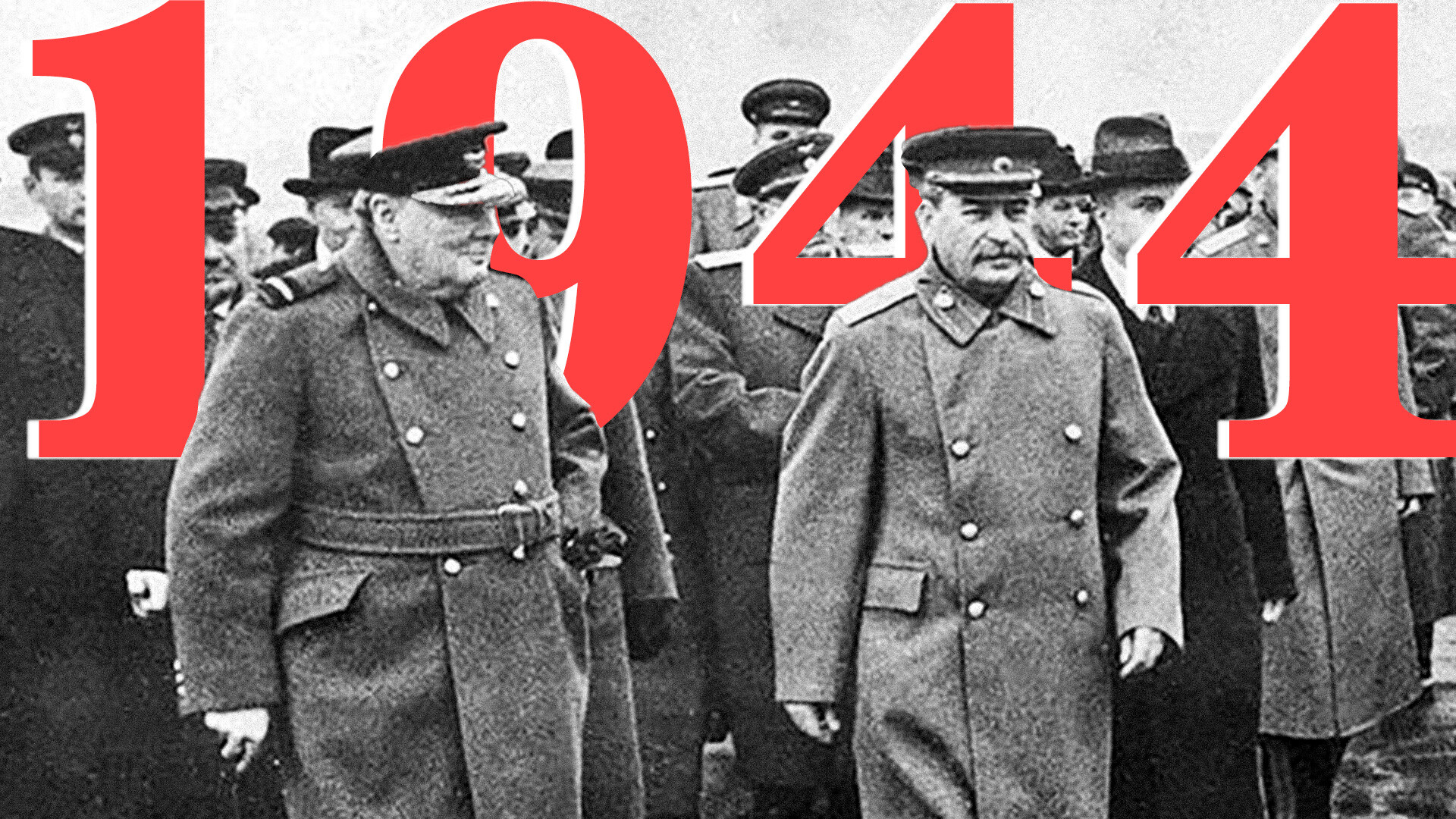
Front line photographers bravely went all the way through the war right to Berlin with the troops. Thanks to their courage, thousands of wartime images were made public and many have survived to this day. The snap below shows military photo correspondent Yevgeny Khaldey in liberated Sevastopol. A year later, he would take his most famous photo – ‘The Victory Banner over the Reichstag’.
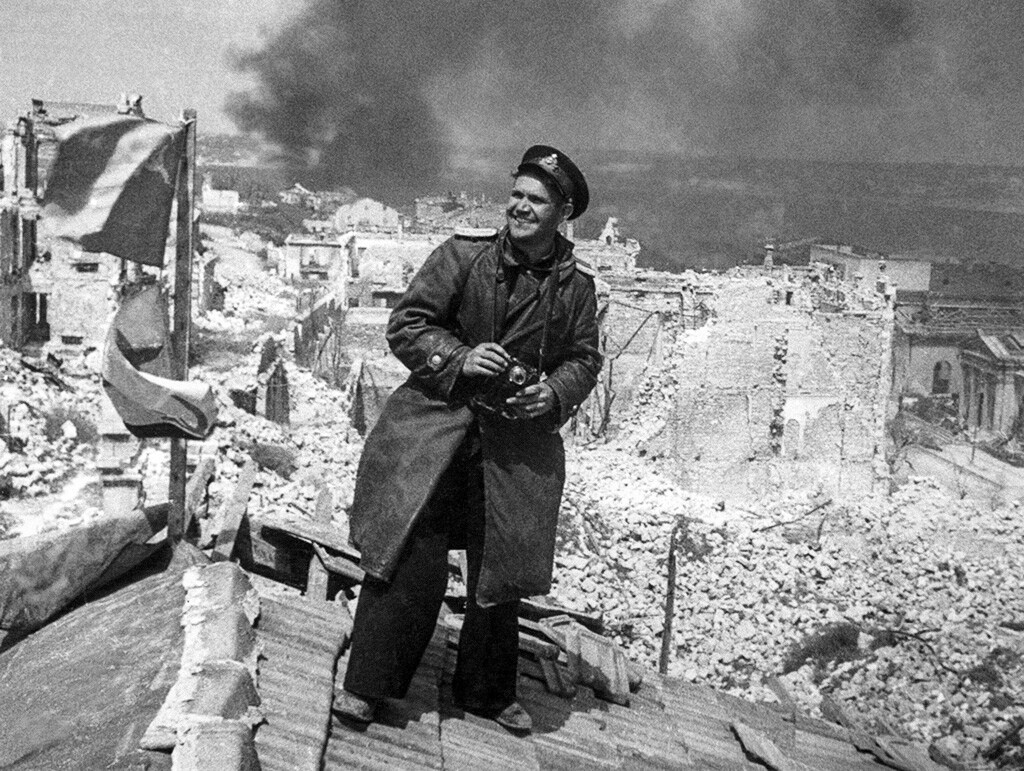
And below are some photos taken by Yevgeny Khaldei himself: Marshal Semyon Timoshenko in preparation for the operation to liberate Crimea in 1944.
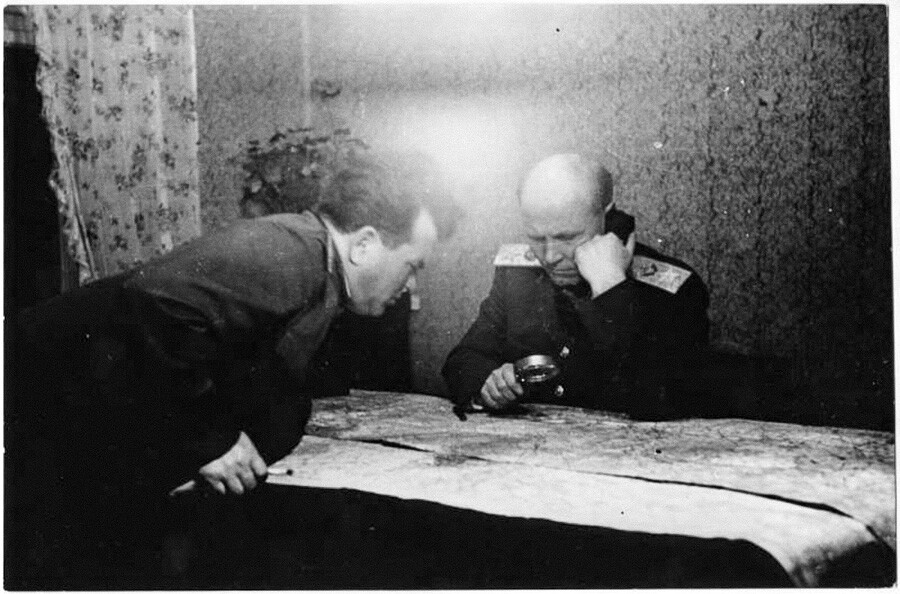
Battling for Kerch, Crimea.

The ruins of the Kerch Museum of Antiquities on Mount Mithridates resemble the ruins of the Parthenon in Greece.
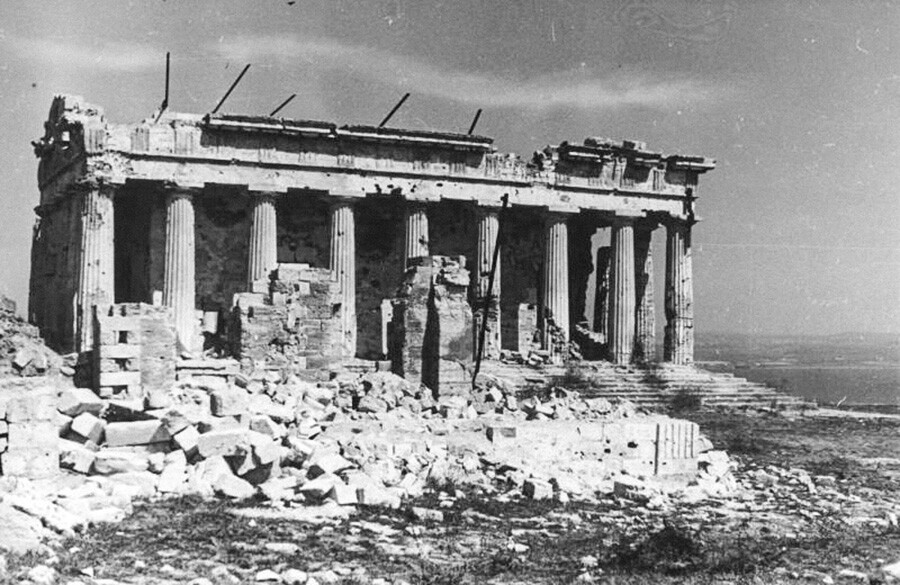
Yevgeny Khaldei was one of the first photographers to see the destroyed Sevastopol after the war…
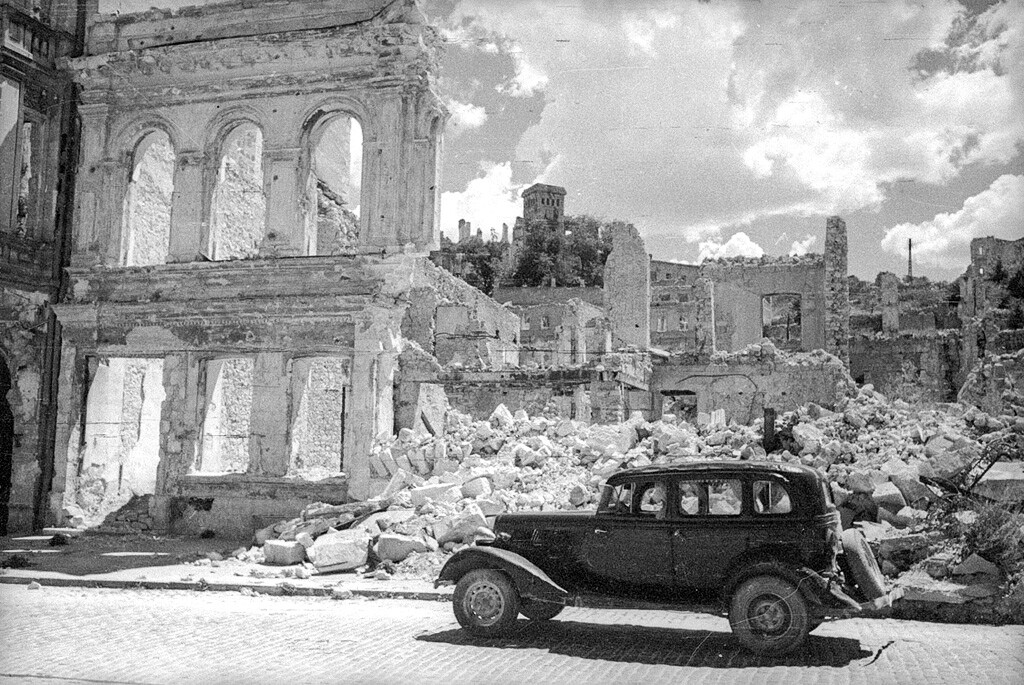
…as well as a salute in honor of the liberation of Sevastopol.
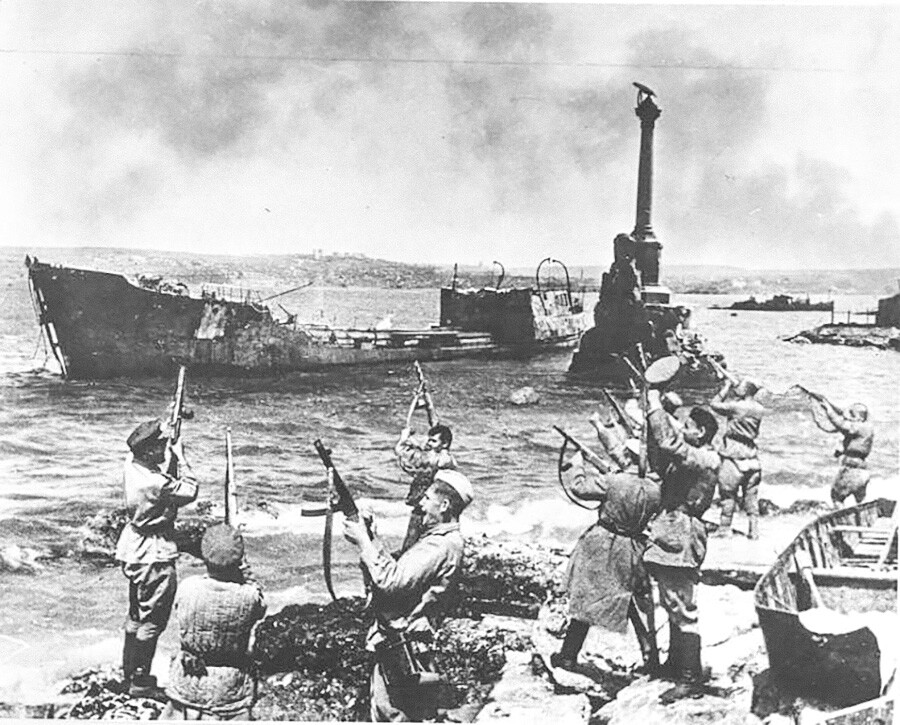
"Living again!" People relaxing on the ruins of destroyed Sevastopol.

Children, meanwhile, are sunbathing on a beach of Sevastopol.
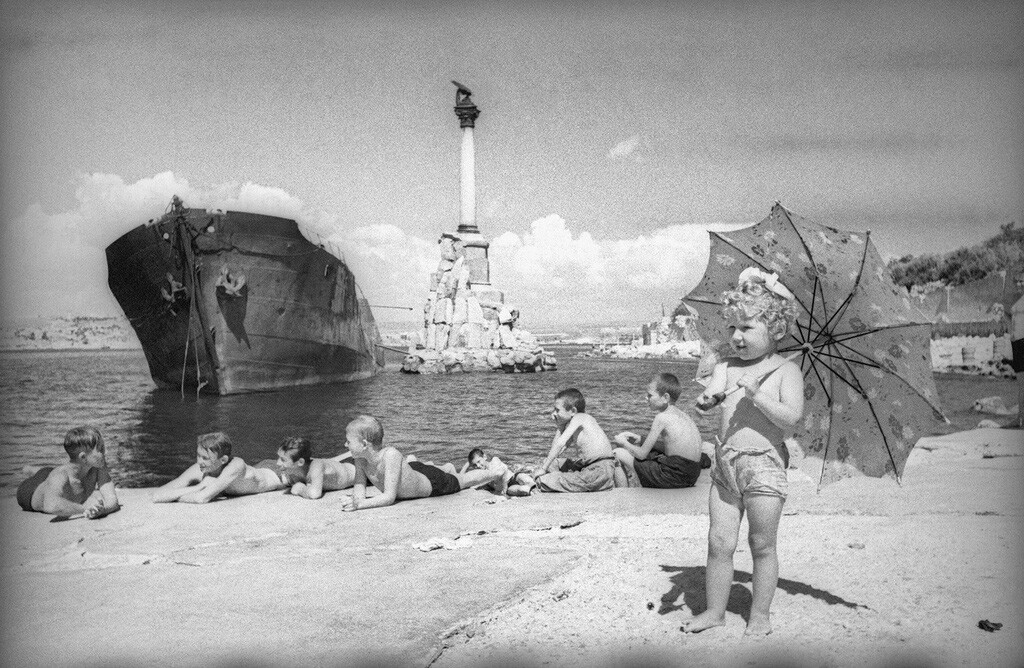
And the sailors of the Molotov cruiser taking sunbaths right on the deck after the battle.
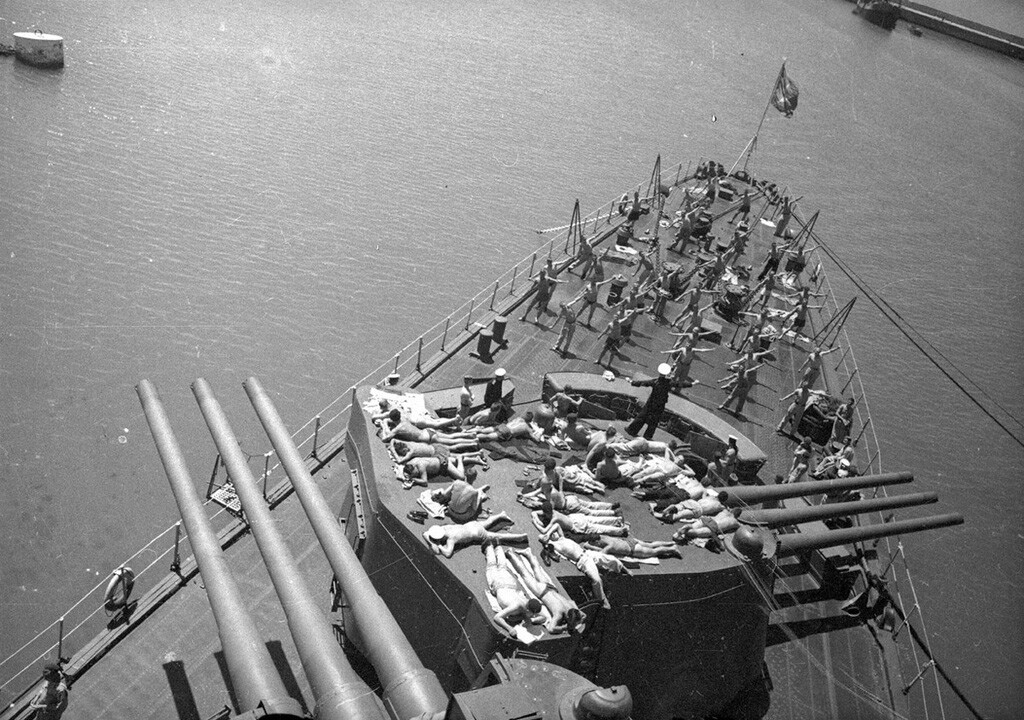
‘This is how wars end’, the legendary photograph by Khaldei, is a very tragic one. It resembles Vasily Vereshchagin's painting ‘The Apotheosis of War’, doesn't it?
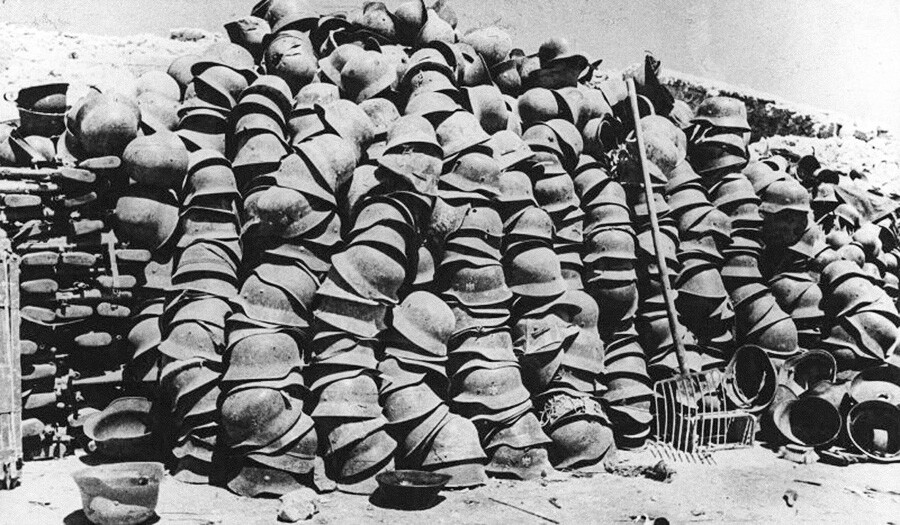
Yevgeny Khaldei and other photographers took many portraits of soldiers and war participants, both famous and nameless heroes. The photo below shows navigator Sergei Duplius in the cockpit of a plane.
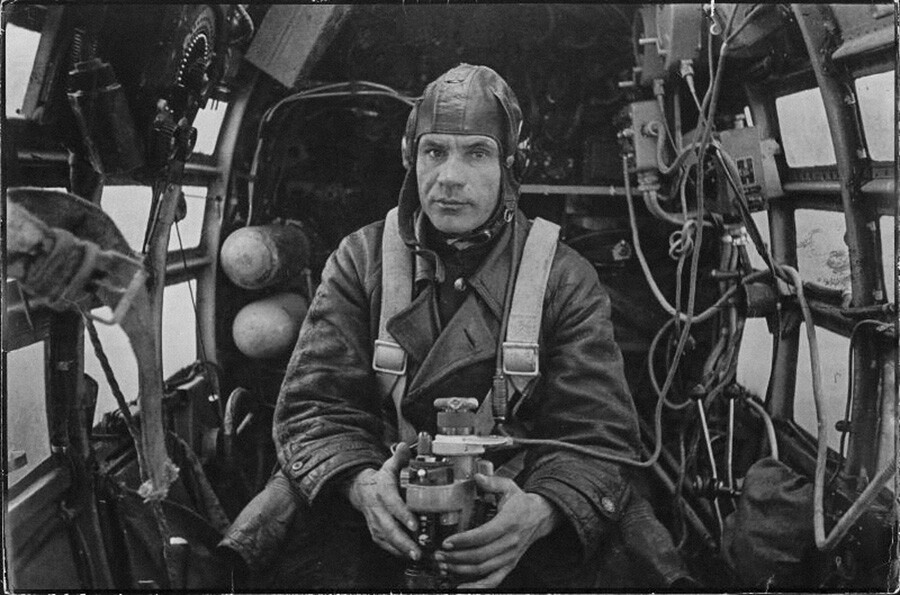
Famous sniper Valentina Kusanova taking aim.
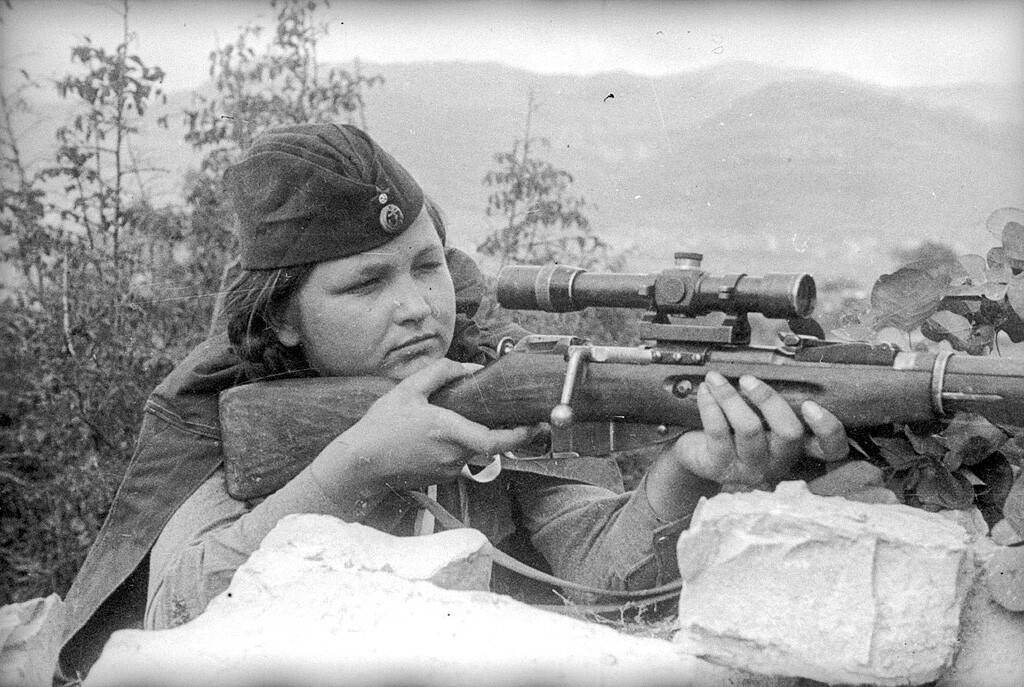
An unknown diver in Crimea checking the water area for mines.
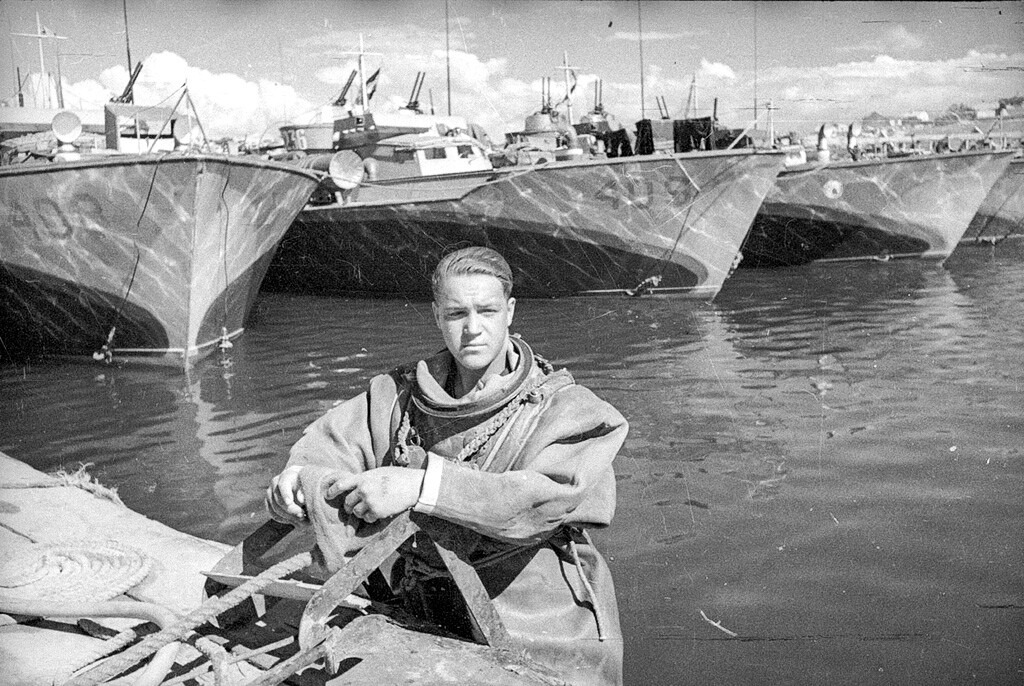
The year 1944 began with the crucial event of lifting the siege of Leningrad. For almost 900 days, the city had been surrounded by the Nazis and cut from the supply of food and medicine. Many people died from shelling and starvation.
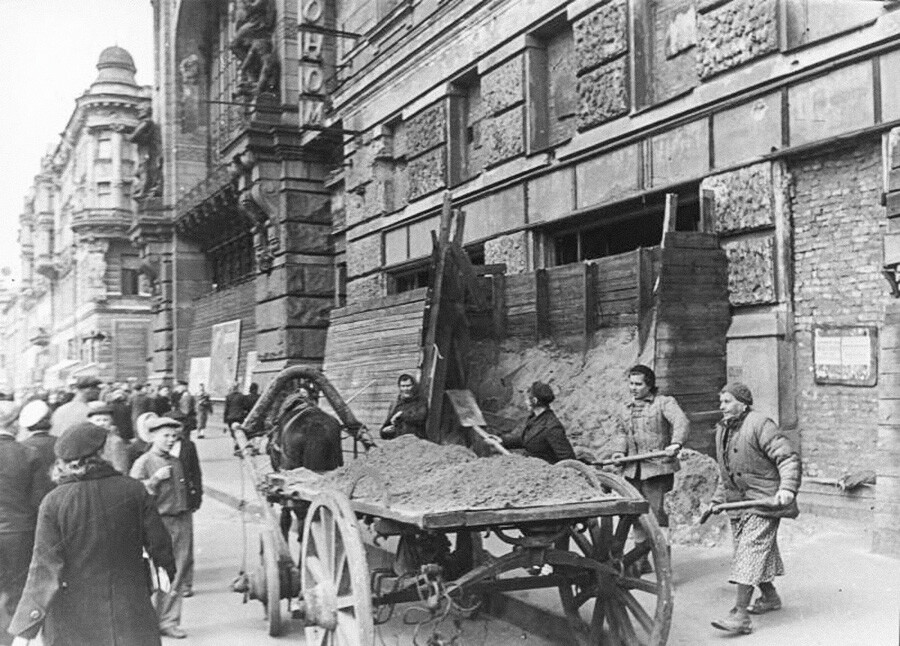
Photographers captured the battles to liberate Leningrad.
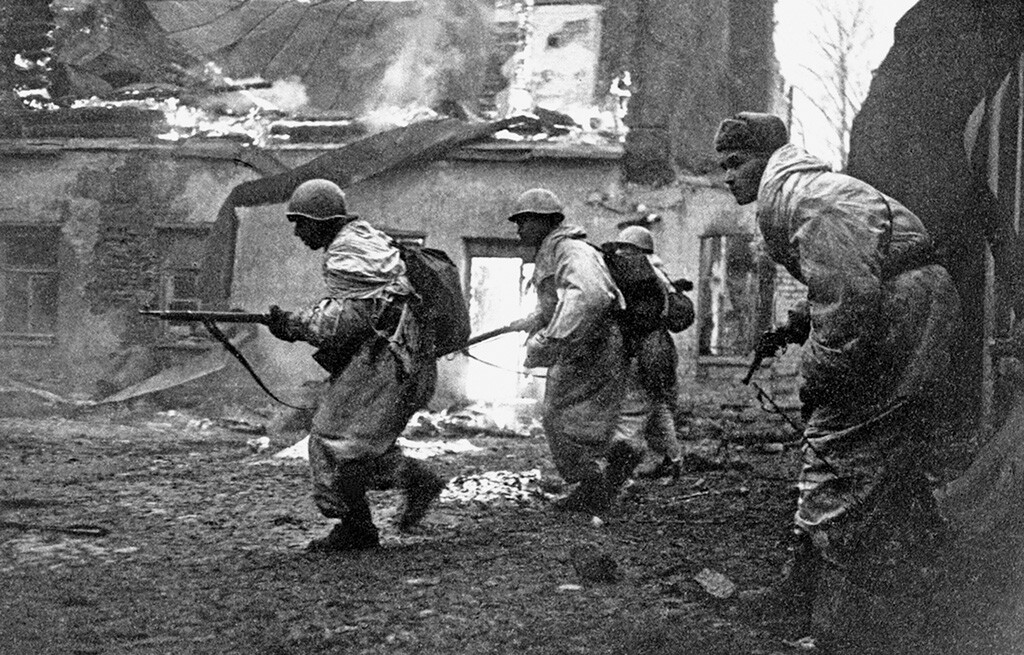
The former tsarist residences on the outskirts of Leningrad and outside the city were occupied, while the beautiful palaces were destroyed. This is what troops and photographers saw when they entered Peterhof, for example.
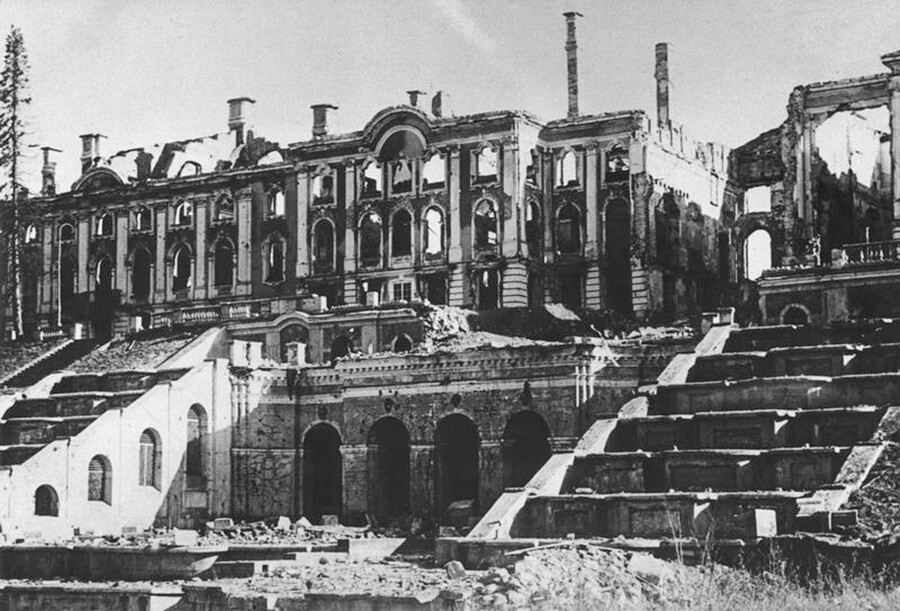
The palaces of the Tsarkoye Selo residence were also turned into ruins.
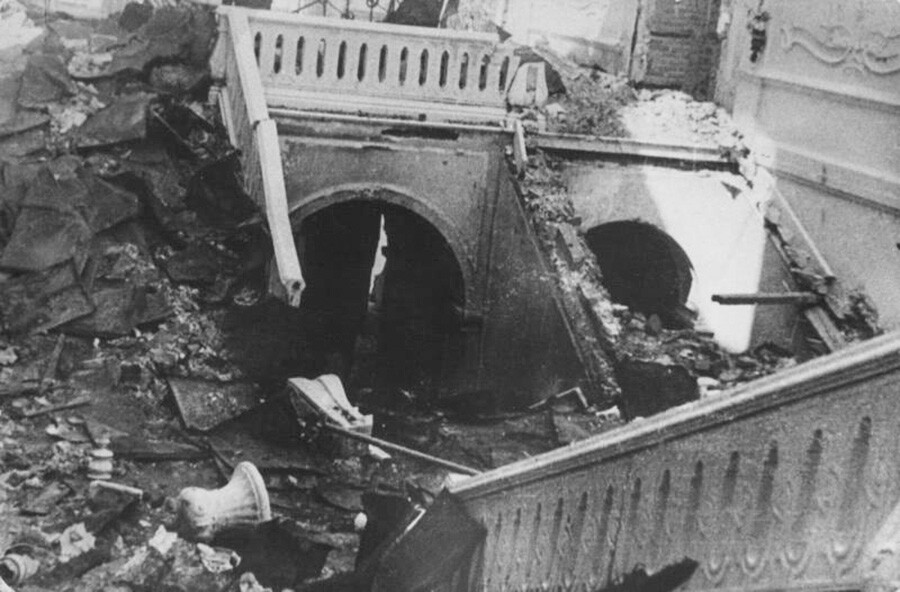
The Nazis organized a cemetery for their soldiers and officers in front of the Alexander Palace in Tsarskoye Selo.
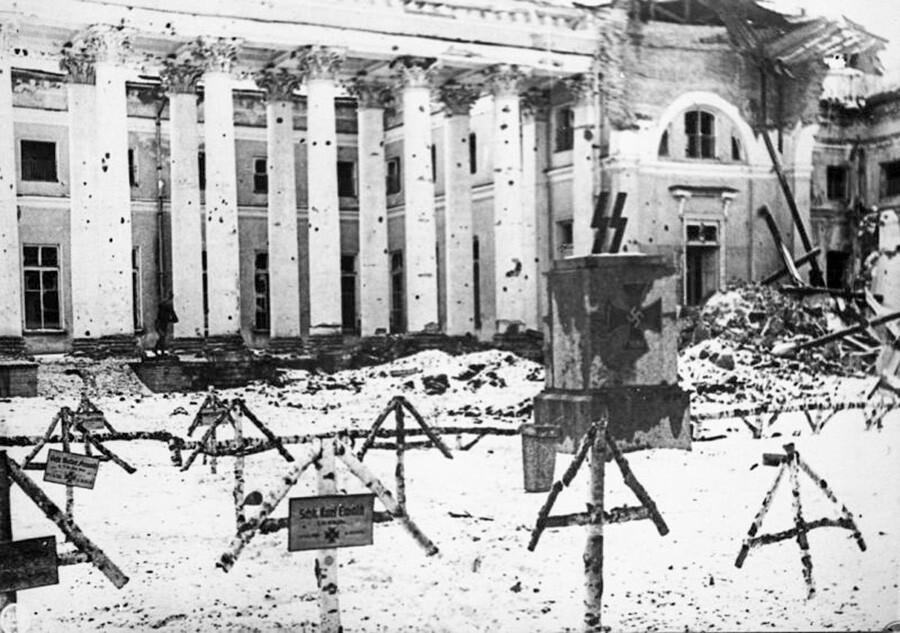
Check out more photos of Petersburg palaces before and after the Nazi invasion and their subsequent restoration here.
Soviet photographers shared the most sentimental moments with the Red Army. Below is a photo of the liberation of Soviet children, who were prisoners of the occupation concentration camp in Petrozavodsk (Karelia). The sign says: “Climbing over the wire is prohibited under threat of execution!”
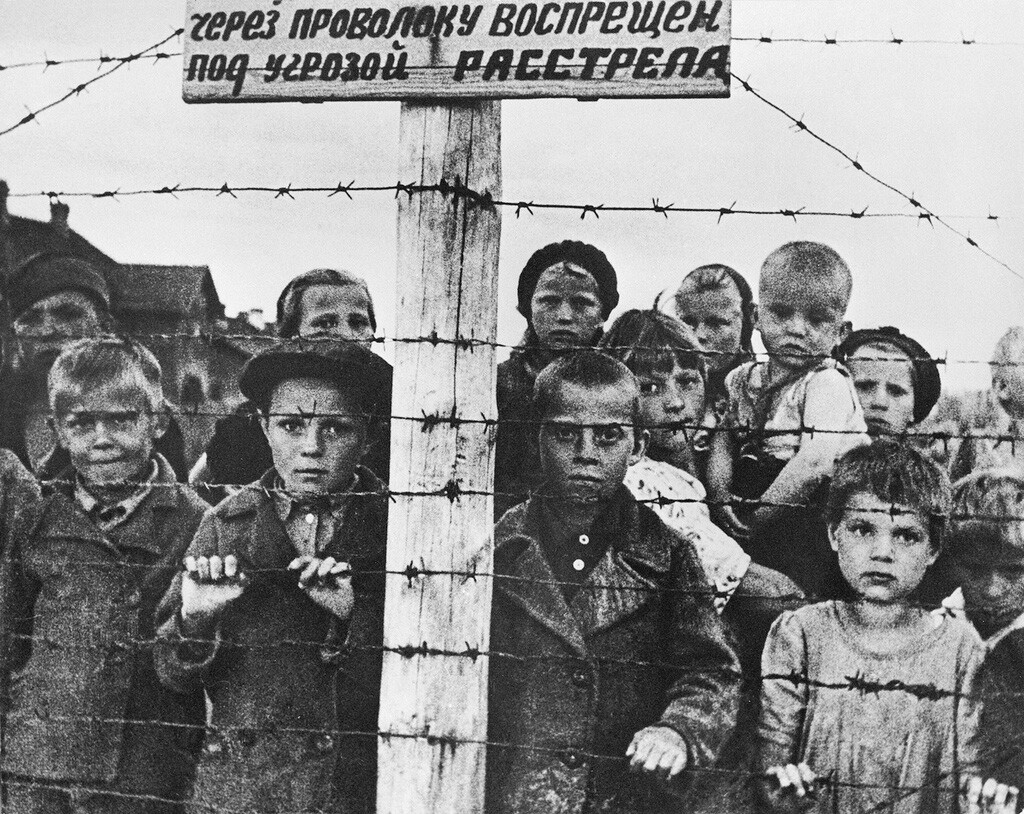
A column of German prisoners of war marching through Moscow.
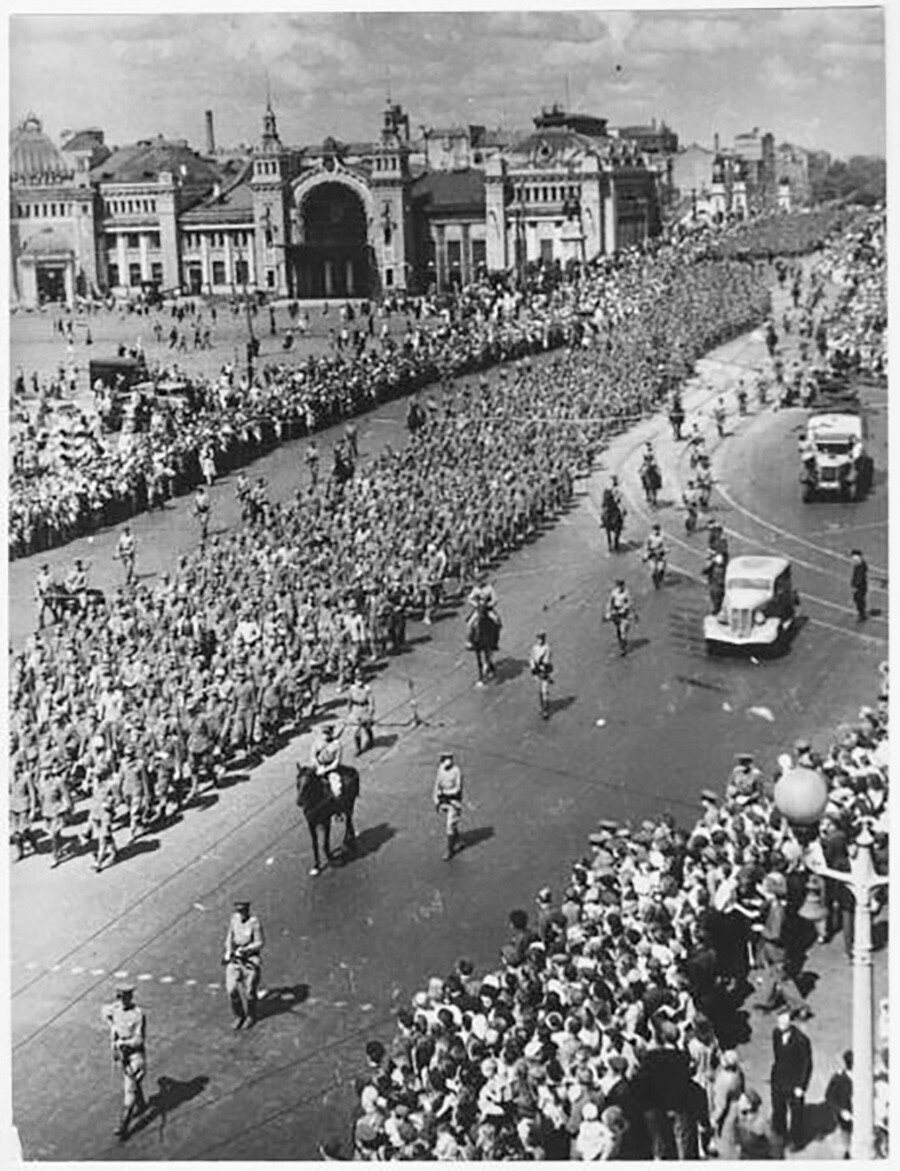
A unit of partisans marching off on a reconnaissance mission.

Tankers from Chelyabinsk reading a letter from their fellow countrymen.
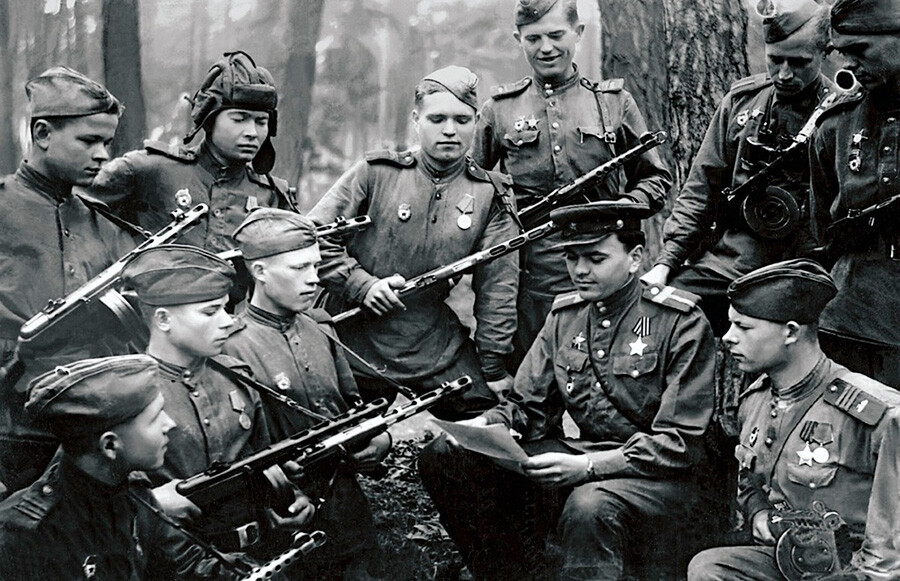
Even in a brutal war, there were some positive moments. And many found love at the front lines. Below, a farmer girl and a soldier are pictured chatting.
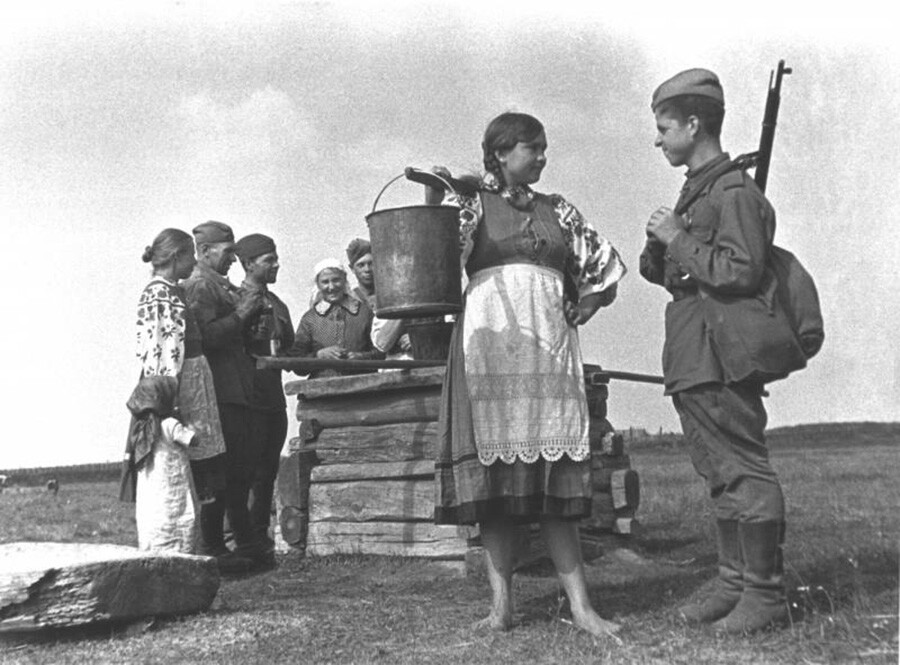
In 1944, Soviet troops liberated Crimea, Belarus, Western Ukraine and Poland. The photo below shows tanks rolling through liberated Lviv.
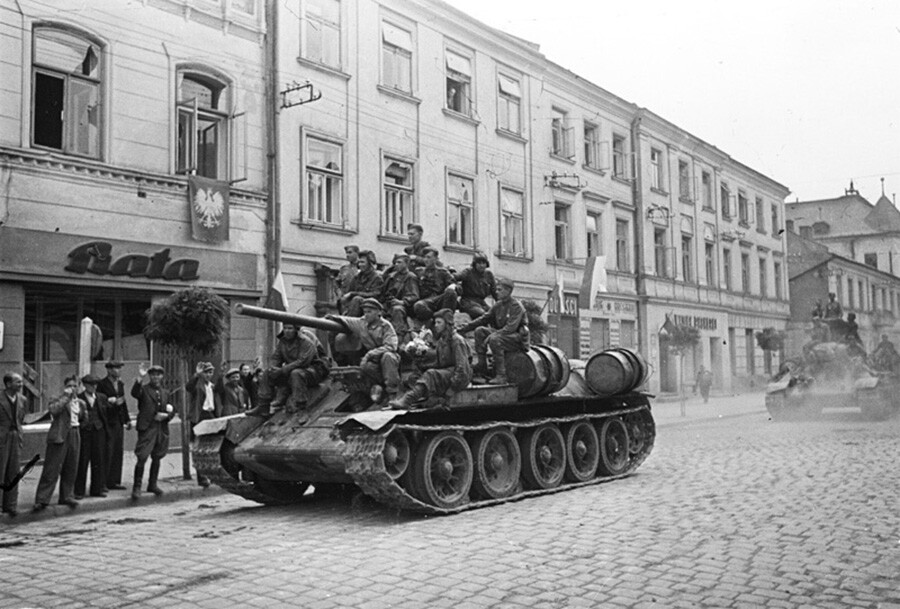
Soviet soldiers were greeted everywhere as heroes-liberators with flowers and tears of happiness.

Below, a group of young women are lining up at a donor station to donate blood for the wounded.

Amazingly, the development of the Moscow Metro continued during the war. In particular, the Elektrozavodskaya (below, left) and Partizanskaya stations were built and opened.
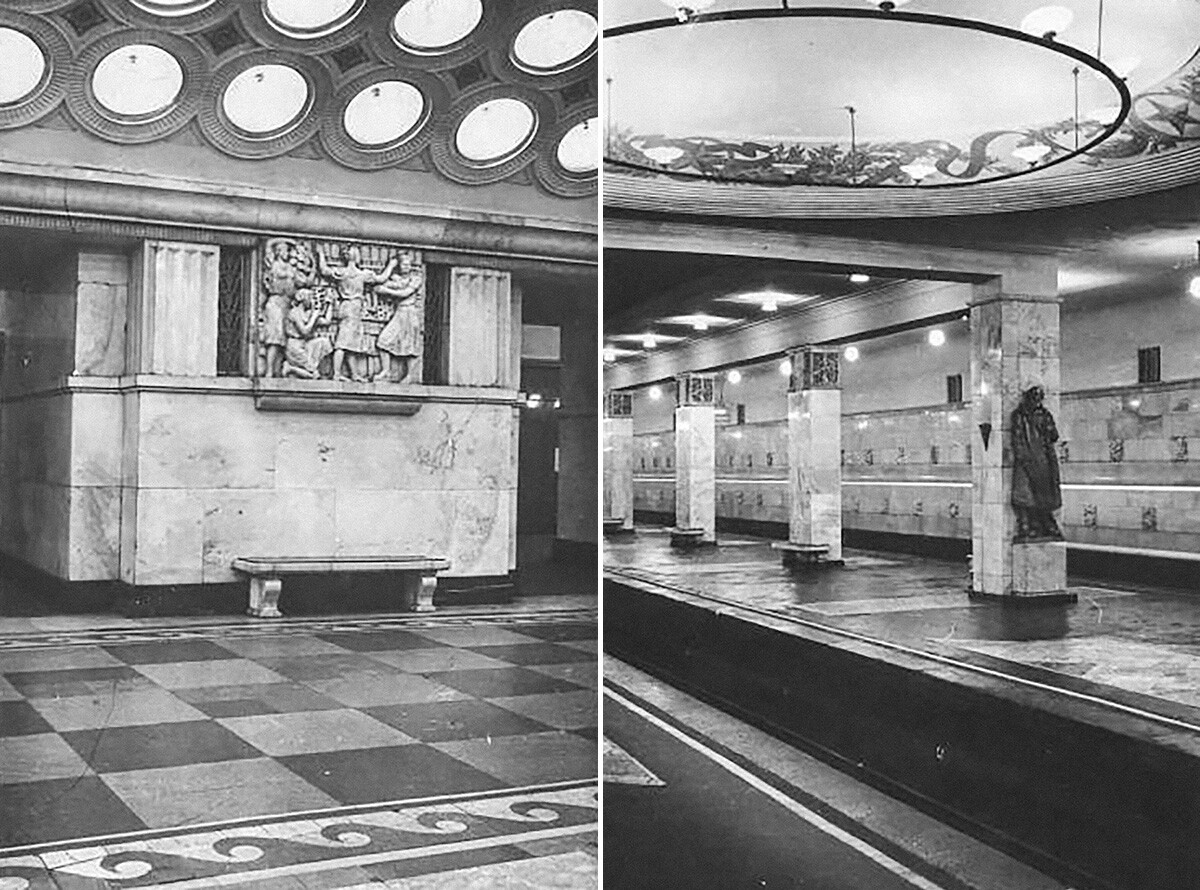
Meanwhile, liberated towns turned back to peaceful life, people went back to work, got married and had children.
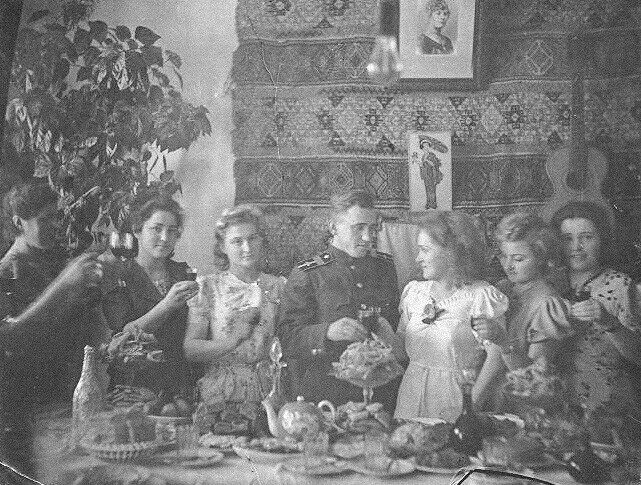
Filmmaking also continued, e.g. Sergei Eisenstein filmed his iconic ‘Ivan the Terrible’ movie. In the photo below, the director is pictured with Nikolai Cherkasov (left), who played the lead role.
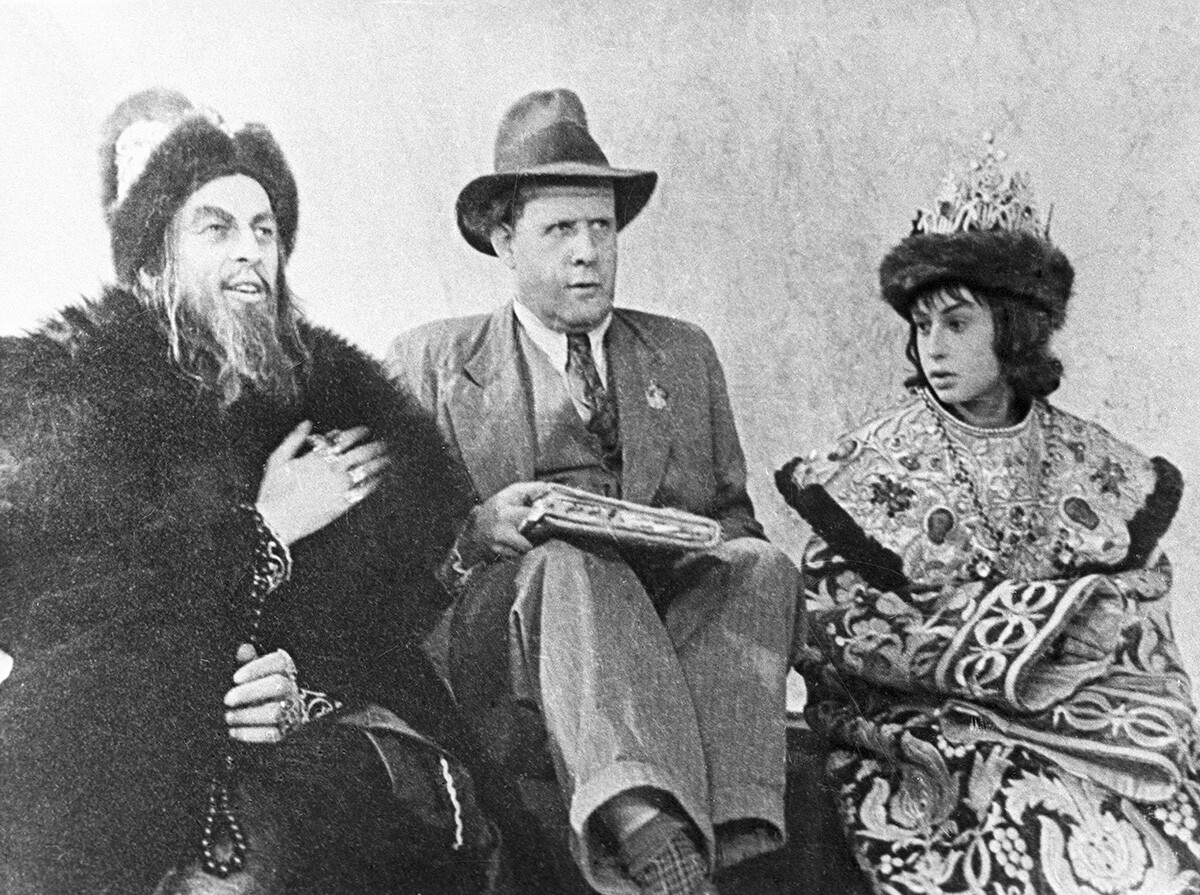
Actor Georgy Millyar was so gaunt during the war that he perfectly lived in the role of the old evil wizard ‘Koschei the Immortal’.
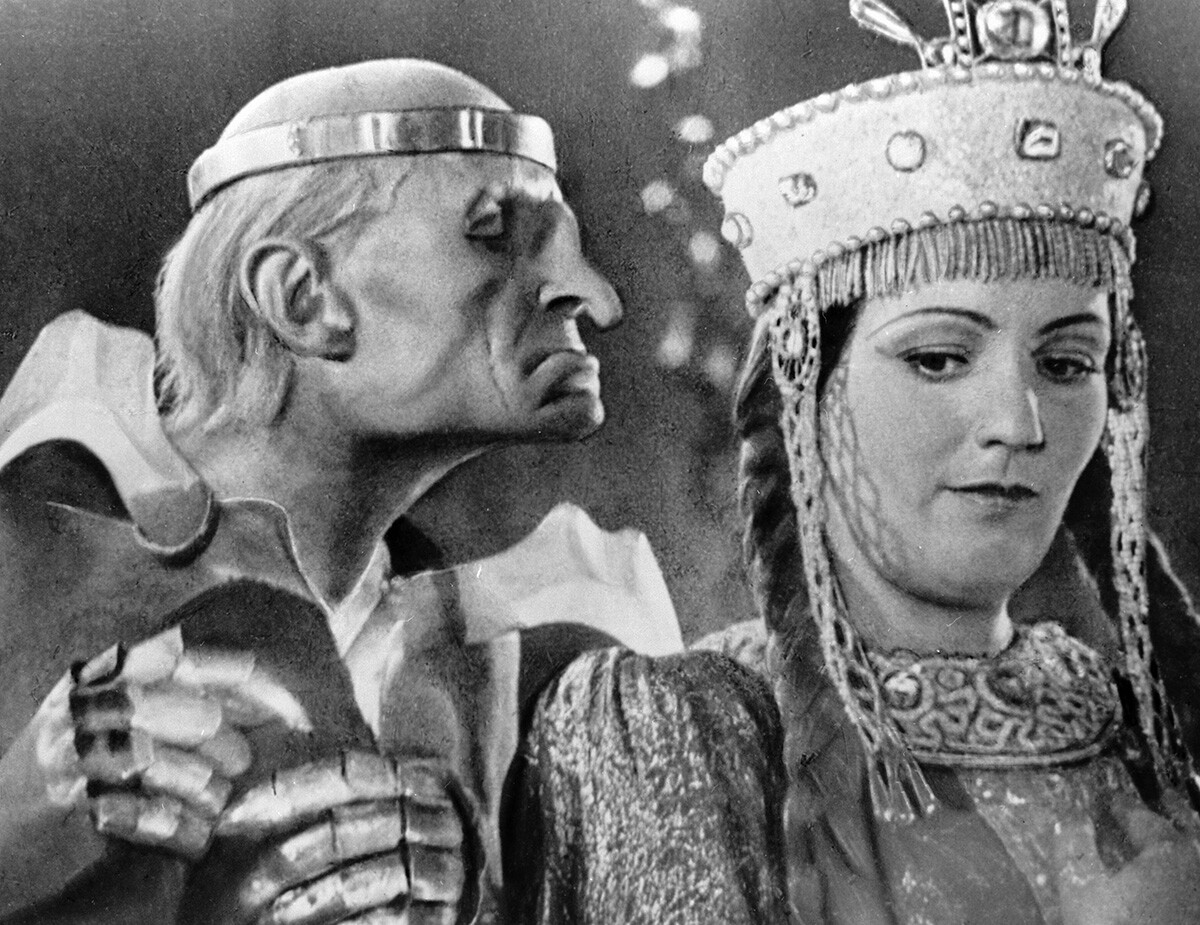
The real literary star of this time was Alexei Tolstoy (not to be confused with Leo; they weren’t even related). After receiving the Stalin Prize for his novel about the revolution, 'The Road to Calvary', he wrote a letter to Stalin, asking to use the money from his prize to build a tank.
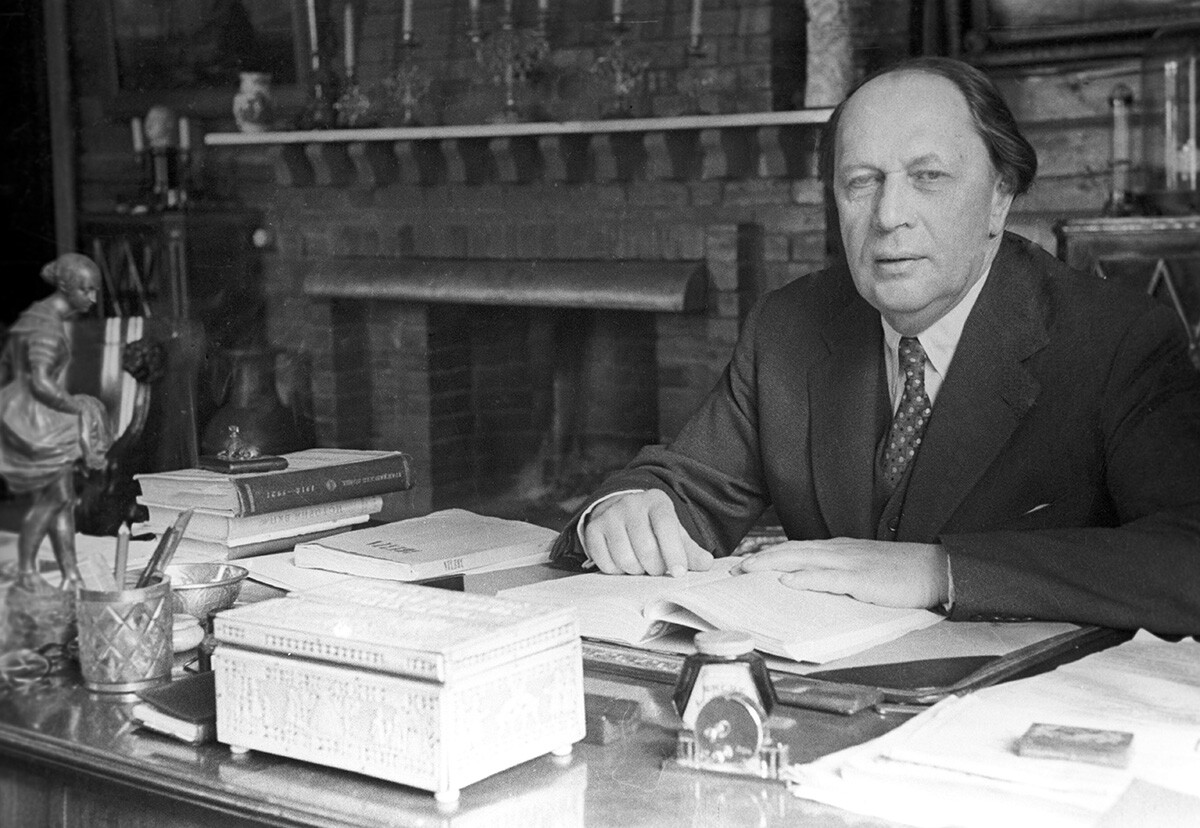
A bear interacting with visitors at the Moscow Zoo in 1944.
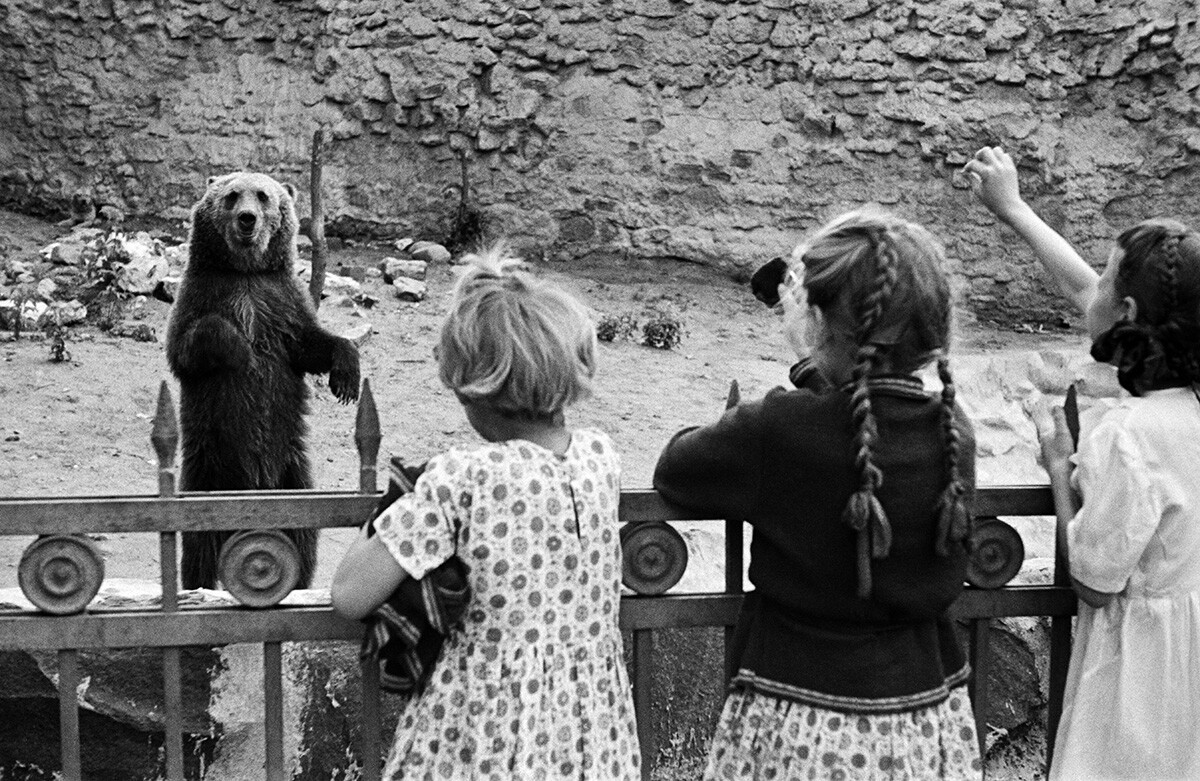
Residents of the city of Ulyanovsk seeing off the ‘Felix Dzerzhinsky’ steamship.
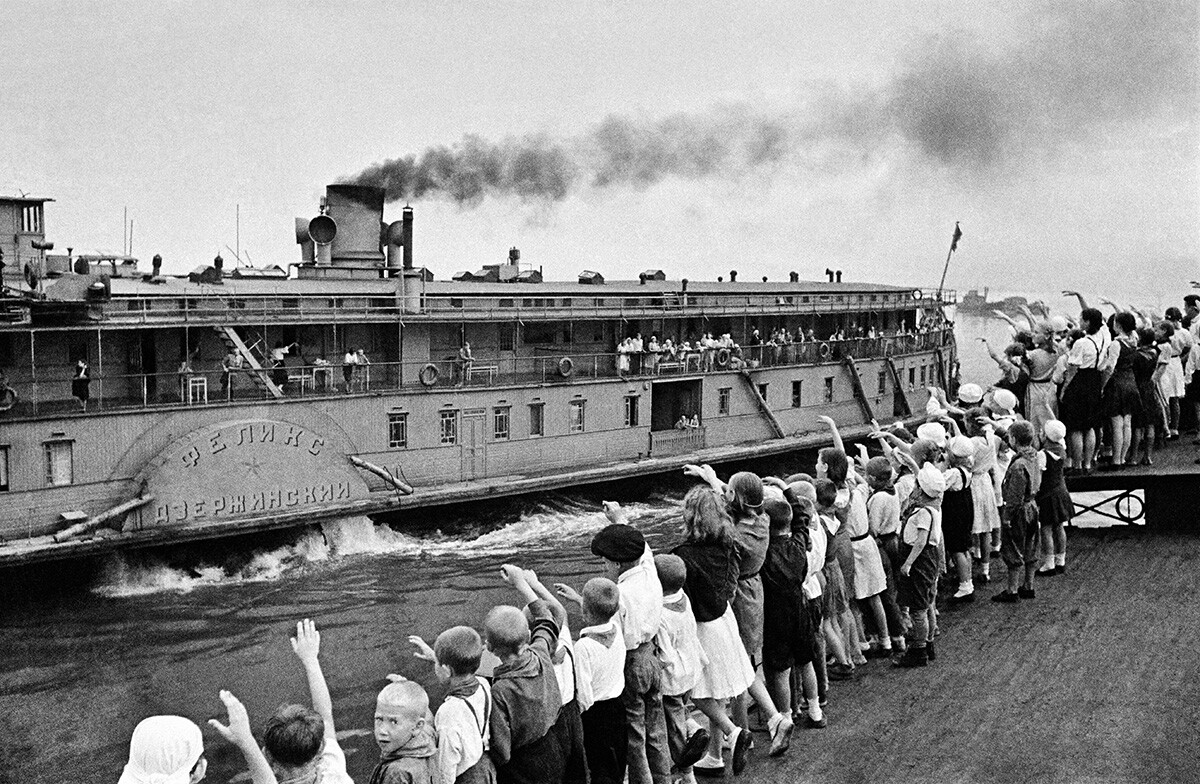
While most of the men went to the front, the women took on “masculine” labor. The photos below show the production of shells at a Leningrad factory…
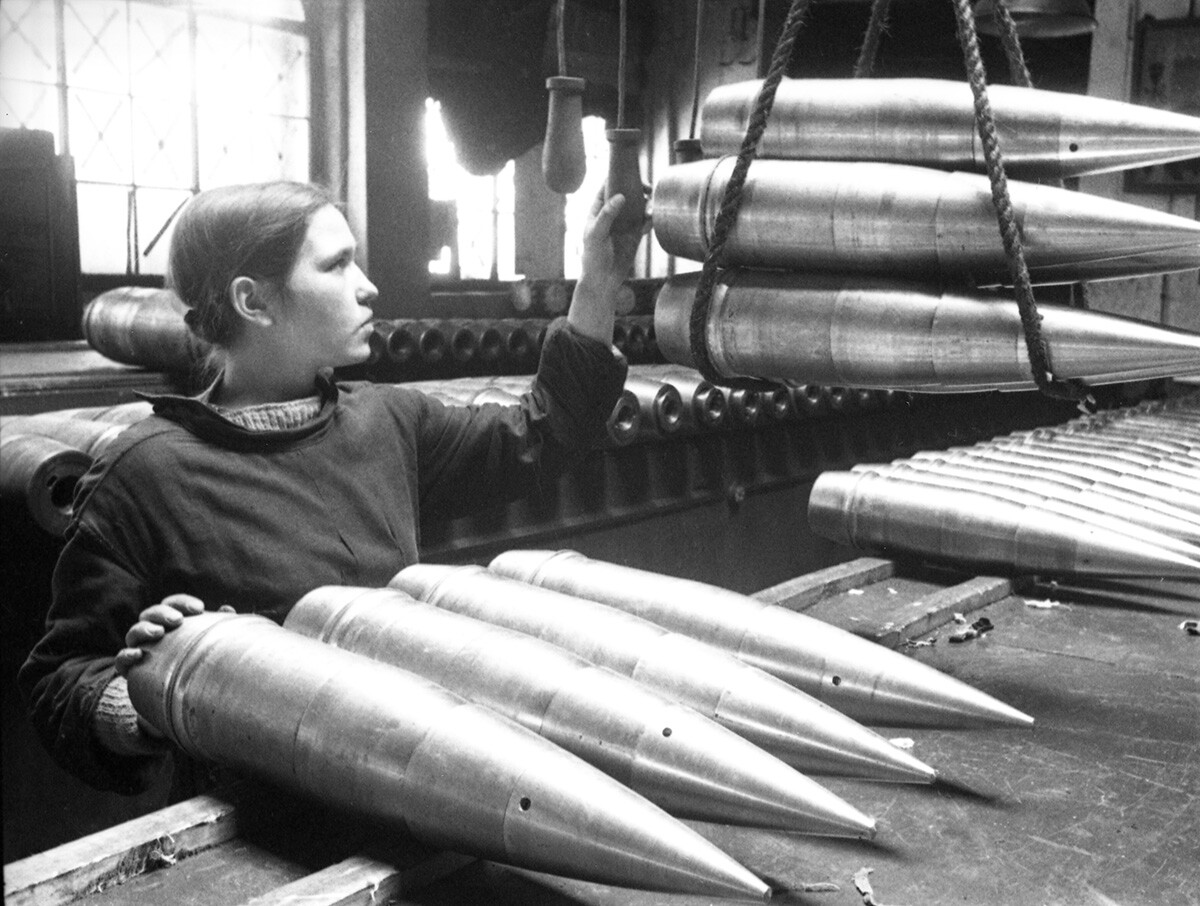
…the production of weapons at a machine-tool factory in Tula (again, almost all women).
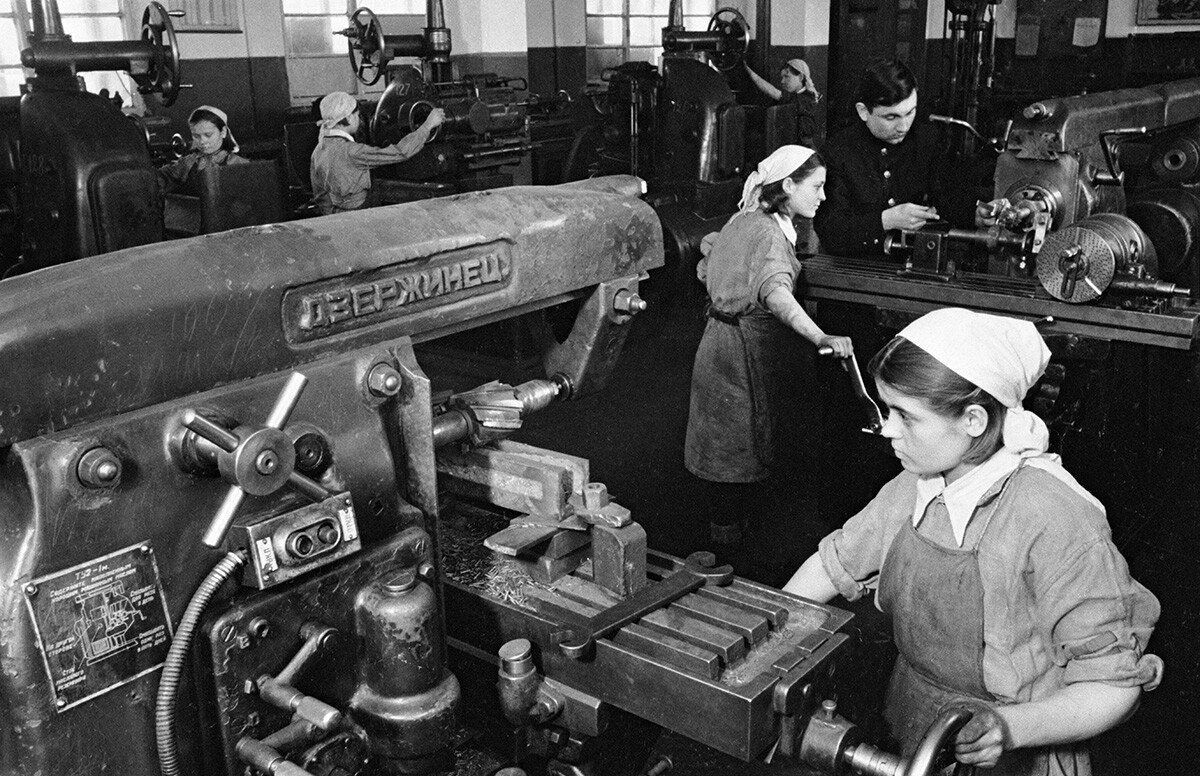
And here is the spectacular iron smelting in ‘Uralmash’ plant's blast furnace.
